TCL C655 / C69B in its larger sizes (55"+) is a QLED from the 2024 vintage by a Chinese manufacturer, offered at a very attractive price. This TV has many advantages that can satisfy a wide range of users. The first big plus is the Google TV operating system. In TCL C655 / C69B and not only, it provides a modern and intuitive interface, as well as support for voice commands in Polish thanks to Google Assistant. Easy access to popular streaming applications, such as Netflix, YouTube, or Prime Video, makes everyday use of this TV very, very convenient. Support for AirPlay and the ability to connect peripheral devices via Bluetooth add even more versatility. A small downside is that the lack of recording functions and picture-in-picture (PiP) may disappoint those accustomed to the full functionality of traditional television, so we recommend connecting an external decoder. As for gamers, C655 / C69B, despite lacking support for 4K resolution at 120 Hz, offers a lot. The TV supports 120 Hz at lower resolutions (1080p and 1440p), so when image dynamics matter more than resolution, we can set the console to performance mode. As a gaming TV, C655 / C69B features such as ALLM (automatic low latency mode switching) and VRR (variable refresh rate), which ensure smooth images and minimize lag. It's also worth mentioning Dolby Vision in gaming mode with low input lag. The picture quality on TCL C655 / C69B is also quite good, especially considering its price. The TV has high native contrast thanks to the VA panel, and additionally, high coverage of the DCI-P3 color palette thanks to quantum dot technology (QLED). Although the lack of local dimming (which can be found in the C655 PRO version) sometimes affects black depth, in this price range, the TV offers really solid picture quality that should satisfy most users.
- Matching (Score)
- Our verdict
- TV appearance
- Where to buy
- Contrast and black detail
- HDR effect quality
- Factory color reproduction
- Color reproduction after calibration
- Smoothness of tonal transitions
- Image scaling and smoothness of tonal transitions
- Blur and motion smoothness
- Console compatibility and gaming features
- Input lag
- Compatibility with PC
- Viewing angles
- TV efficiency during daytime
- Details about the matrix
- TV features
- Apps
- Playing files from USB
- Sound
TCL C655 / C69B (55"-85") vs Philips PUS8500
Direct compare
C655 / C69B
PUS8500 / PUS8560 / PUS8510 / PUS8600

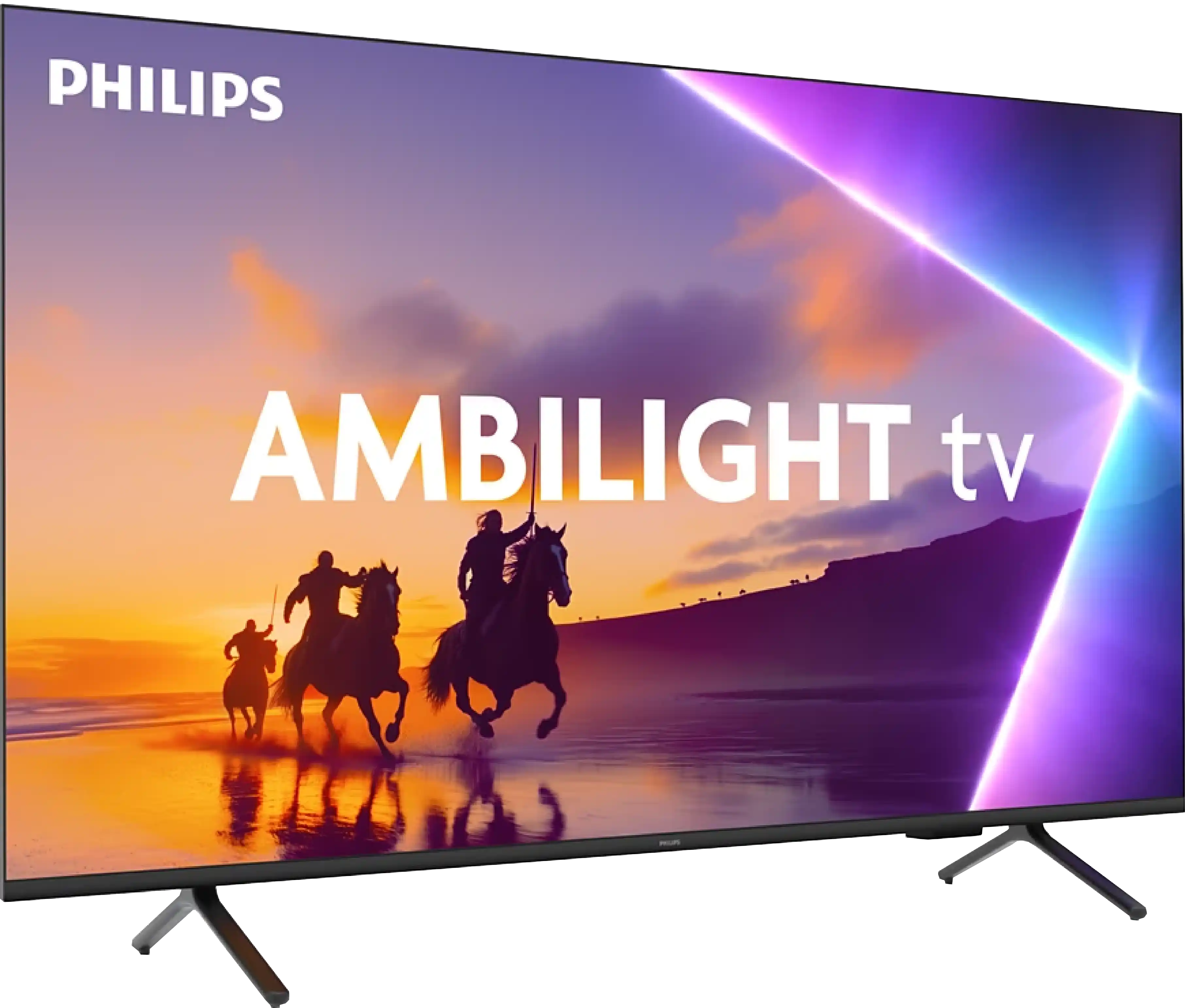
Panel type: LCD VA
Resolution: 3840x2160
System: Google TV
Model year: 2024
Complete the survey to find out the result

Panel type: LCD VA
Resolution: 3840x2160
System: Titan OS
Model year: 2025
Complete the survey to find out the result

Overall rating
6.3
5.6
Movies and series in UHD quality
5.7
5.4
Classic TV, YouTube
5.6
6.1
Sports broadcasts (TV and apps)
5.2
5.2
Gaming on console
7.7
6.7
TV as a computer monitor
6.0
5.6
Watching in bright light
5.6
4.9
Utility functions
7.1
4.9
Apps
10.0
4.6
Sound quality
6.6
6.2
Complete the survey to find out what fits your preferences
Advantages
High brightness level of 450 nits
High native contrast
Google TV support with access to many streaming apps
Features for gamers, such as ALLM, VRR, and Game Bar, as well as Dolby Vision support in gaming mode
Very low input lag, even in Dolby Vision mode (13 ms)
Apple AirPlay support and the ability to connect devices via Bluetooth
Relatively low price
120/144Hz and HDMI 2.1 in the 98' variant *
Ambilight TV System
High native contrast - VA panel
Low input lag
Basic features for gamers: ALLM and VRR
Full support for audio formats: Dolby Atmos and DTS
Backlit remote controler with numeric keypad
Disadvantages
Poor viewing angles resulting from the VA matrix – the image loses quality when viewed from the side
No USB recording function and picture-in-picture (PiP) option
Average panel brightness
TitanOS system feels unfinished (some features do not work, gaps in applications)
Infrared remote control
Font readability issues (PC)
Our verdict
Ambilight because that's where we have to start, it's the biggest reason to buy the PUS8500. The three-sided backlighting of the TV looks great, especially in the evening. It creates an atmosphere, masks the imperfections of contrast, and makes the viewing experience simply more enjoyable. Even if the black levels aren't perfect, the native VA panel's high contrast is just fine. On top of that, there's really decent input lag and several gaming features like ALLM and VRR. Although there’s no HDMI 2.1 or 120Hz panel, casual gaming should be a pleasure. Especially since it's responsive and latency-free. Additionally, there’s full support for audio formats – both Dolby Atmos and DTS, so soundbar owners can rejoice too.
But let's not kid ourselves – this is still a budget TV, and at times it shows. Brightness is average – not weak enough to make viewing impossible, but if you hit a particularly sunny day, watching conditions without blinds can be problematic. However, in our opinion, the biggest disappointment with the PUS8560 is the operating system, Titan OS. Despite the system debuting some time ago, certain features simply wouldn't work – for example, screen mirroring from a phone despite the manufacturer's claims that such a feature is present here. There are fewer apps than with competitors, and the system itself runs a bit clumsily. Overall, it seems to have some capabilities, but clearly lacks refinement.
Of course, this is not a TV meant to compete with top models. But if someone is looking for something simple, with a nice atmosphere that the Ambilight system provides, it is a quite reasonable offer. You just need to know what to expect and accept the many compromises present here.
TV appearance




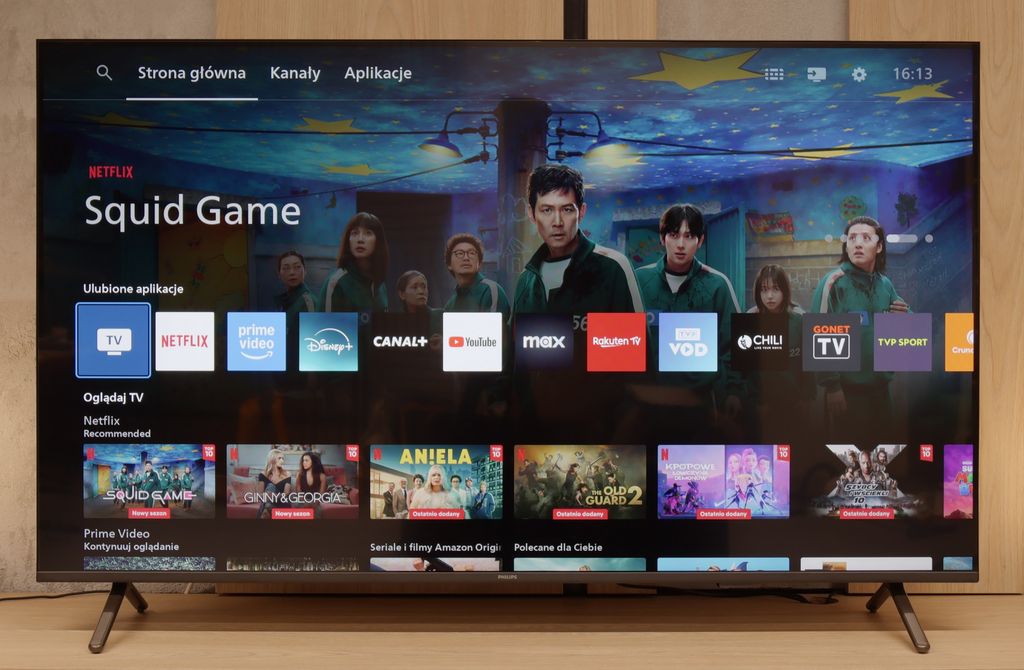
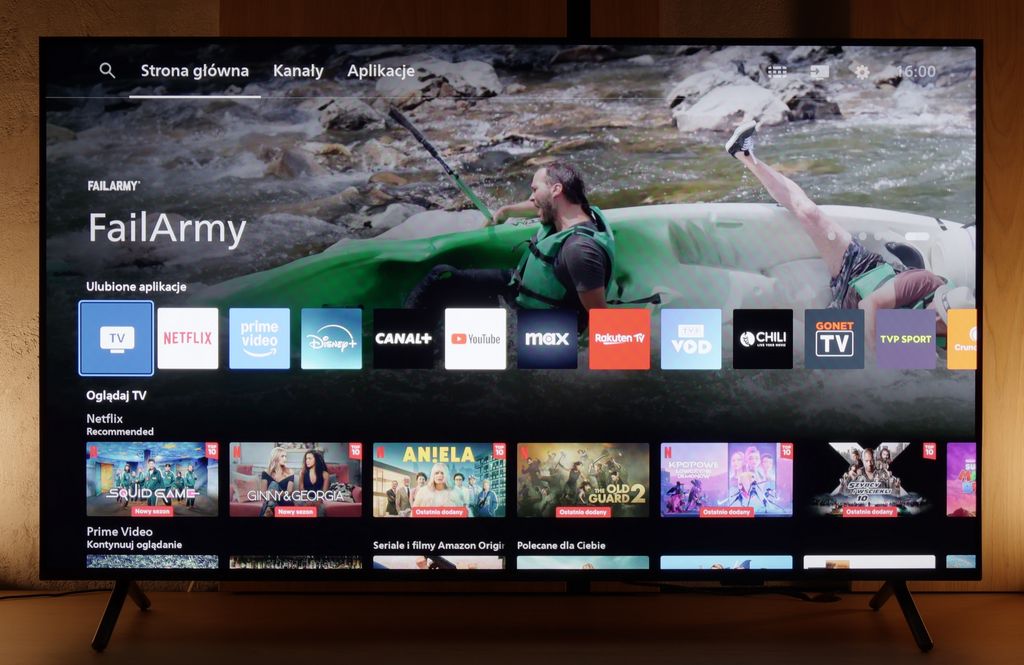
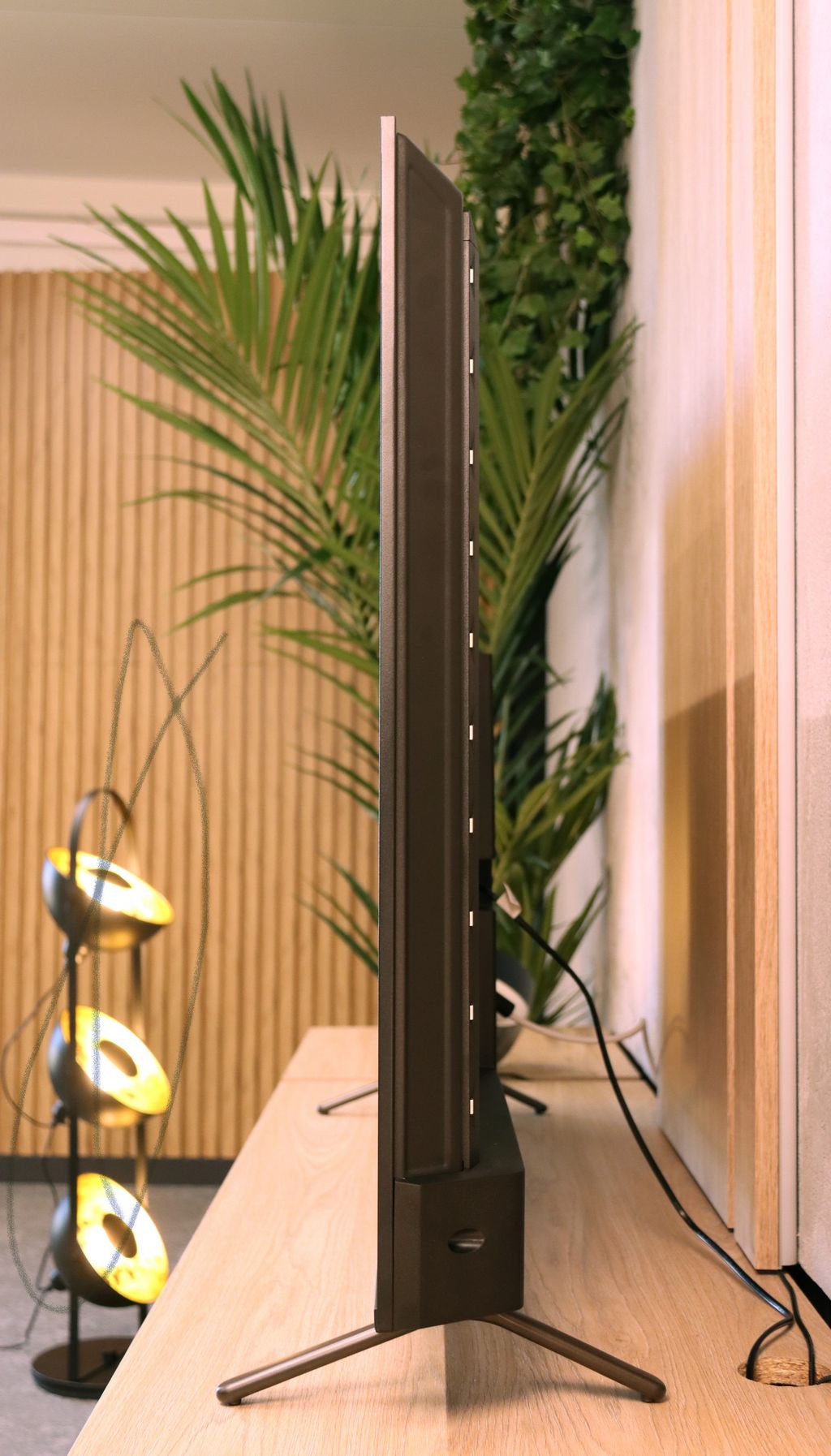
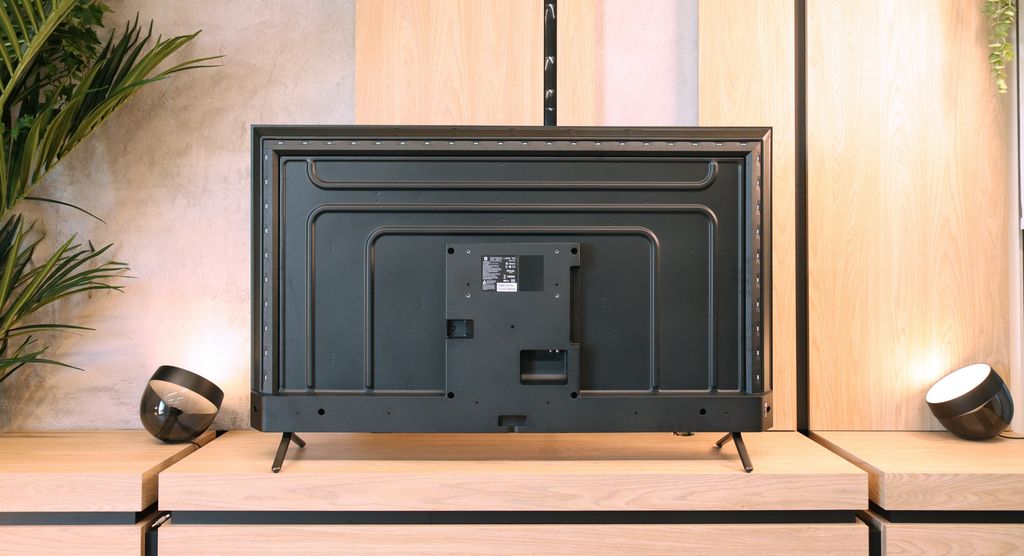
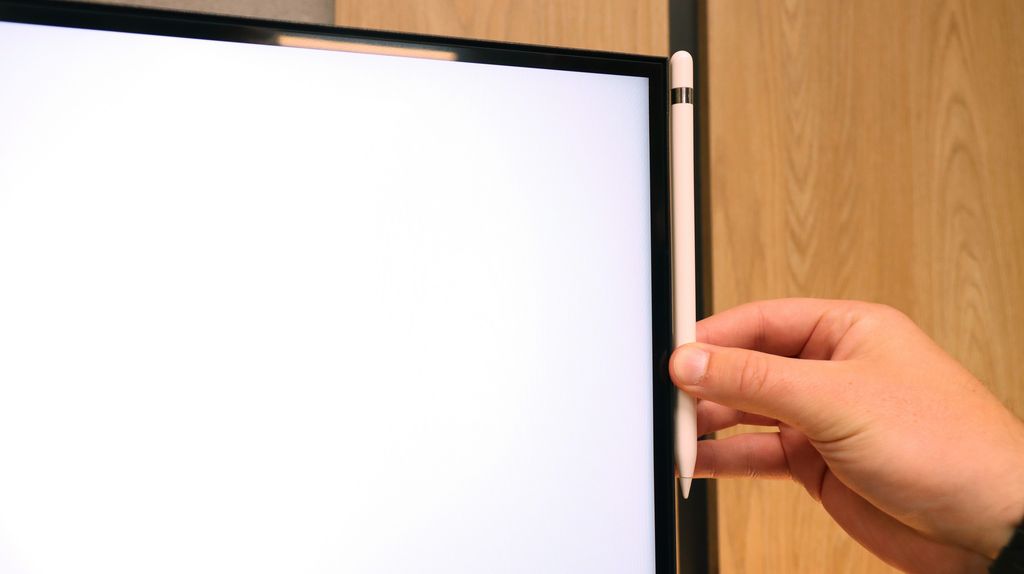
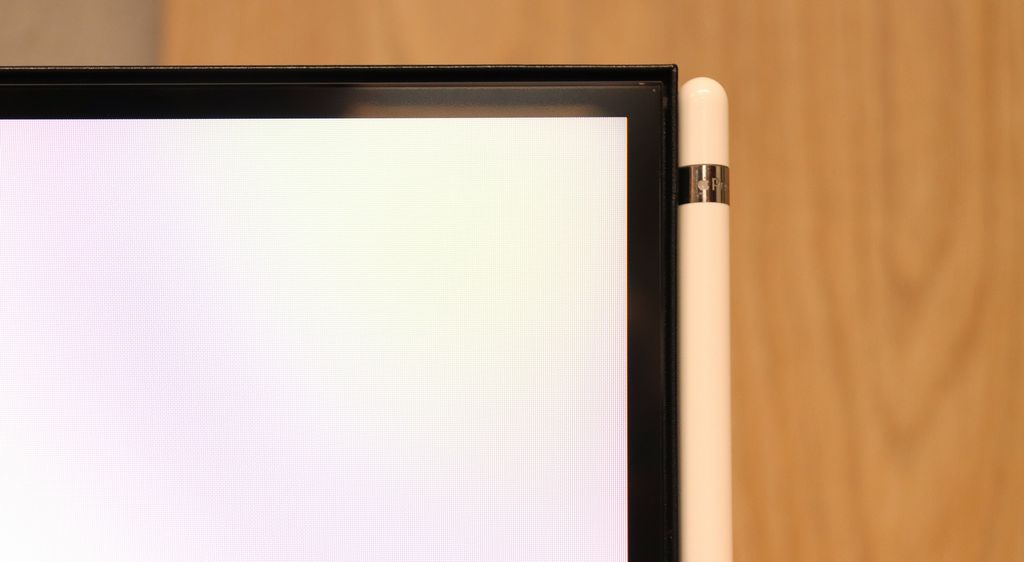

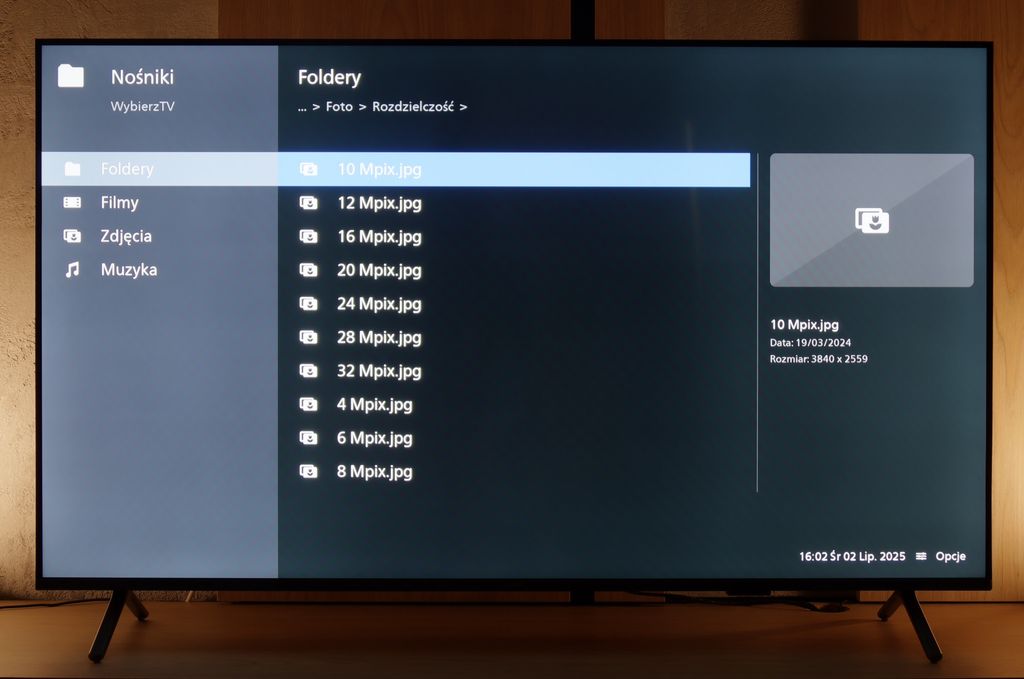
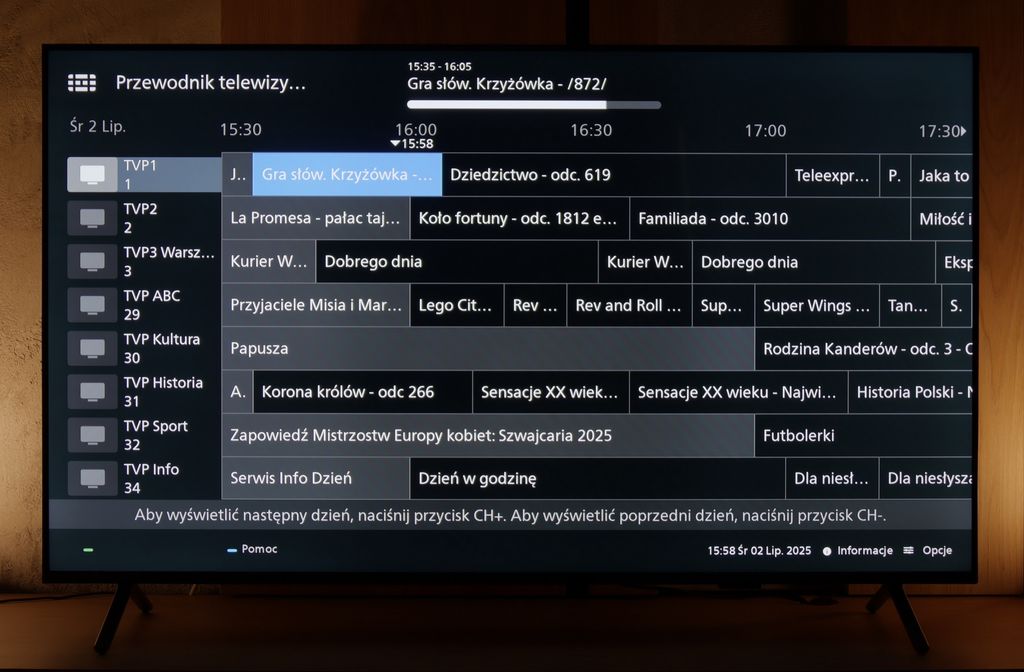
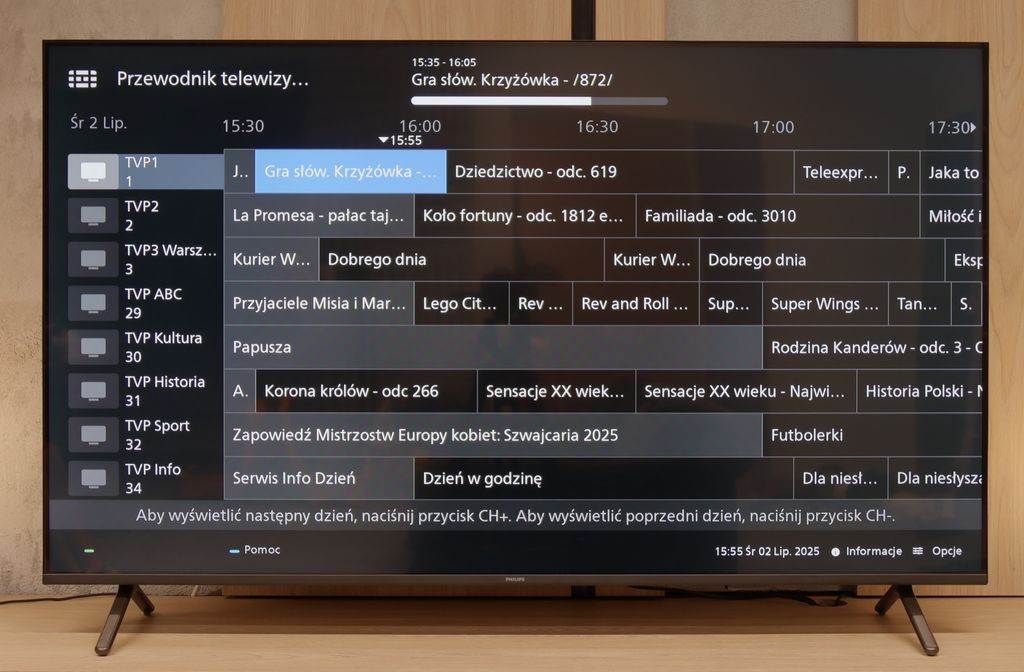
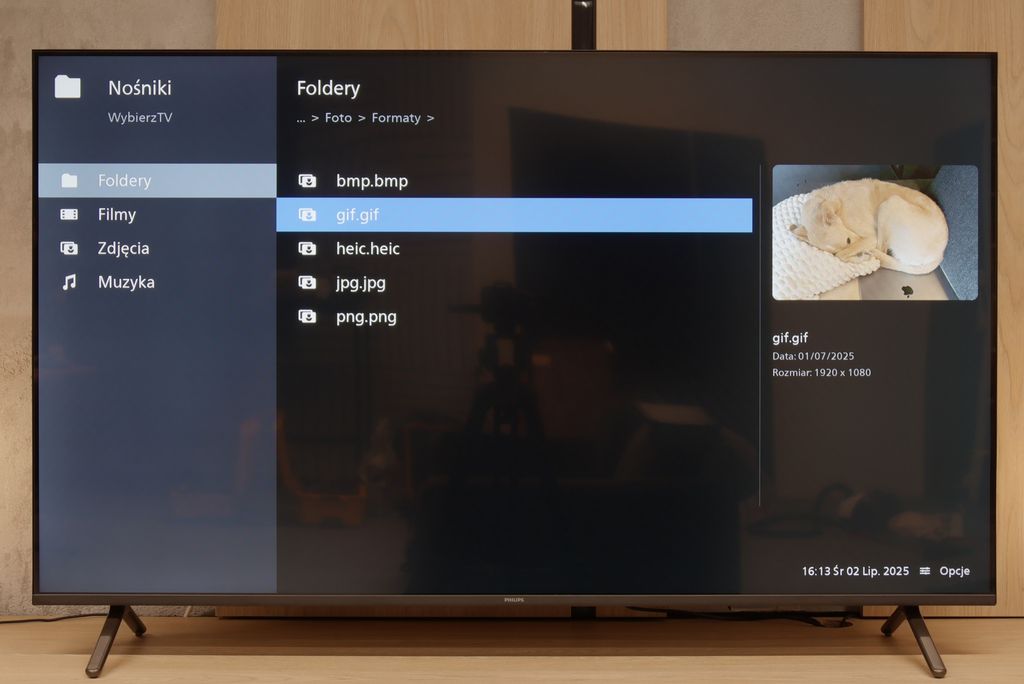
Contrast and black detail
6.1/10
6.1/10
Local dimming function: No
Local dimming function: No
Contrast:

Result
6,850:1

Result
6,750:1

Result
6,350:1

Result
6,750:1

Result
4,800:1

Result
6,000:1

Result
5,950:1

Result
6,250:1

Result
5,950:1

Result
5,750:1
Halo effect and black detail visibility:

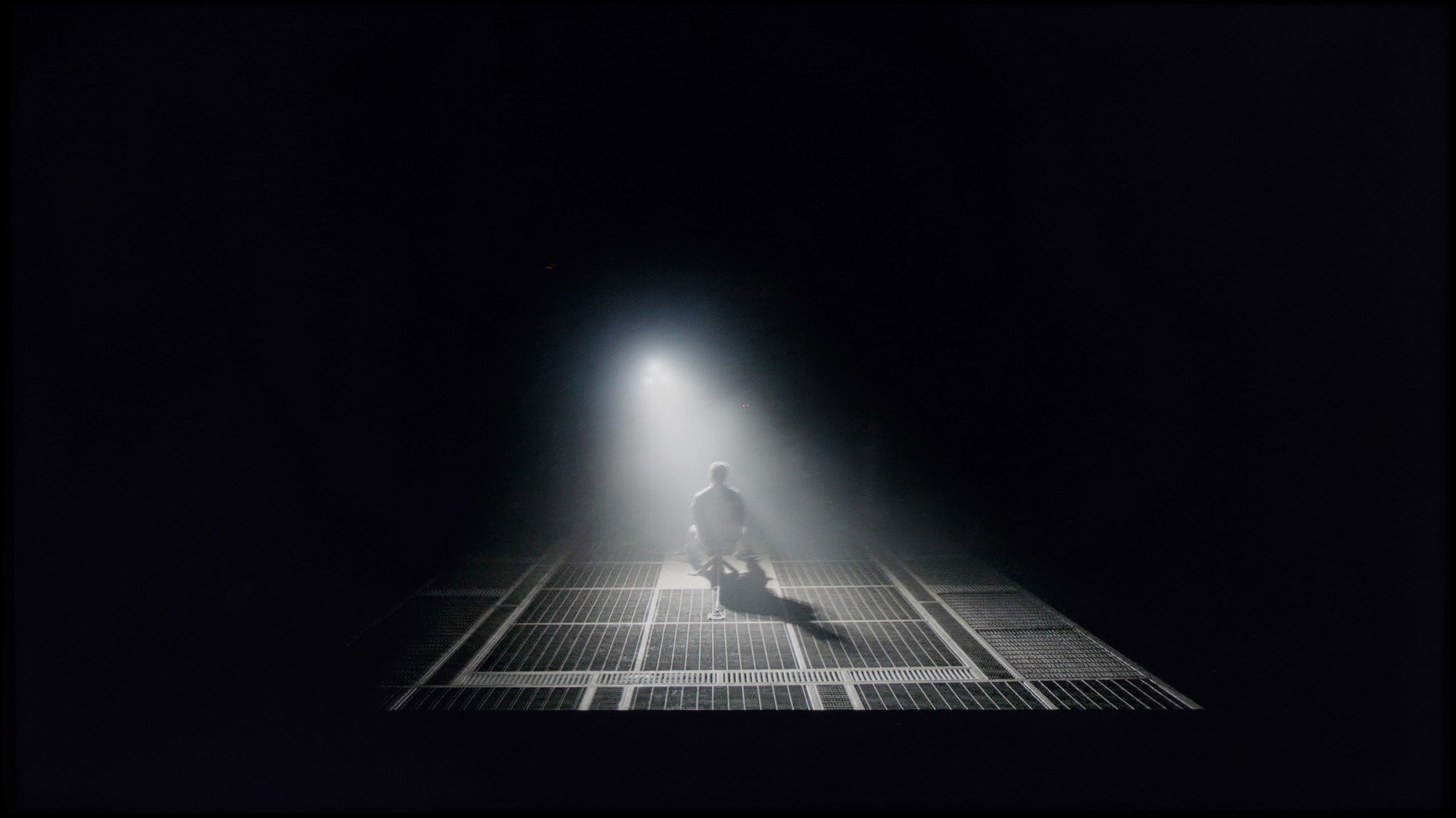
The TCL C655 / C69B television is equipped with a VA panel, which offers above-average contrast, making the quality of blacks and image depth clearly better than in IPS panels. However, the lack of local dimming technology, which is available in the model with the "Pro" suffix, negatively impacts the quality of blacks. In some scenes, such as in the movie "Sicario 2", it can be noticed that the black takes on a navy hue, lowering the feeling of immersion. Overall, the black is decent, but it could be better if the television were equipped with local dimming technology.
The Philips PUS8560 in the size we tested is equipped with a VA panel. As a result, the black levels – for an LCD television – can be considered decent. And that is exactly the case with this model. Both the blacks and the overall contrast impression in the film scenes we tested are quite good – the image does not wash out, and details are visible even in more difficult sections.
But the panel alone is not everything. Unfortunately, the PUS8500 is not equipped with local dimming (which is a given looking at the TV segment), so one has to reckon with the fact that with completely turned-off lights, the black can resemble more shades of navy than true black. On the other hand – and here’s a plus for Philips – the Ambilight system does a great job. The backlighting makes a real impact on contrast perception. Thanks to this, even if the black technically isn't perfect, the subjective viewing experience becomes much more enjoyable. For many people, that’s enough for an evening screening to be truly impressive.
HDR effect quality
5.2/10
4.1/10
Luminance measurements in HDR:

Result
364 nit

Result
416 nit

Result
484 nit

Result
400 nit

Result
450 nit

Result
273 nit

Result
300 nit

Result
324 nit

Result
343 nit

Result
334 nit
Scene from the movie “Pan” (about 2800 nits)


Scene from the movie “Billy Lynn” (about 1100 nits)

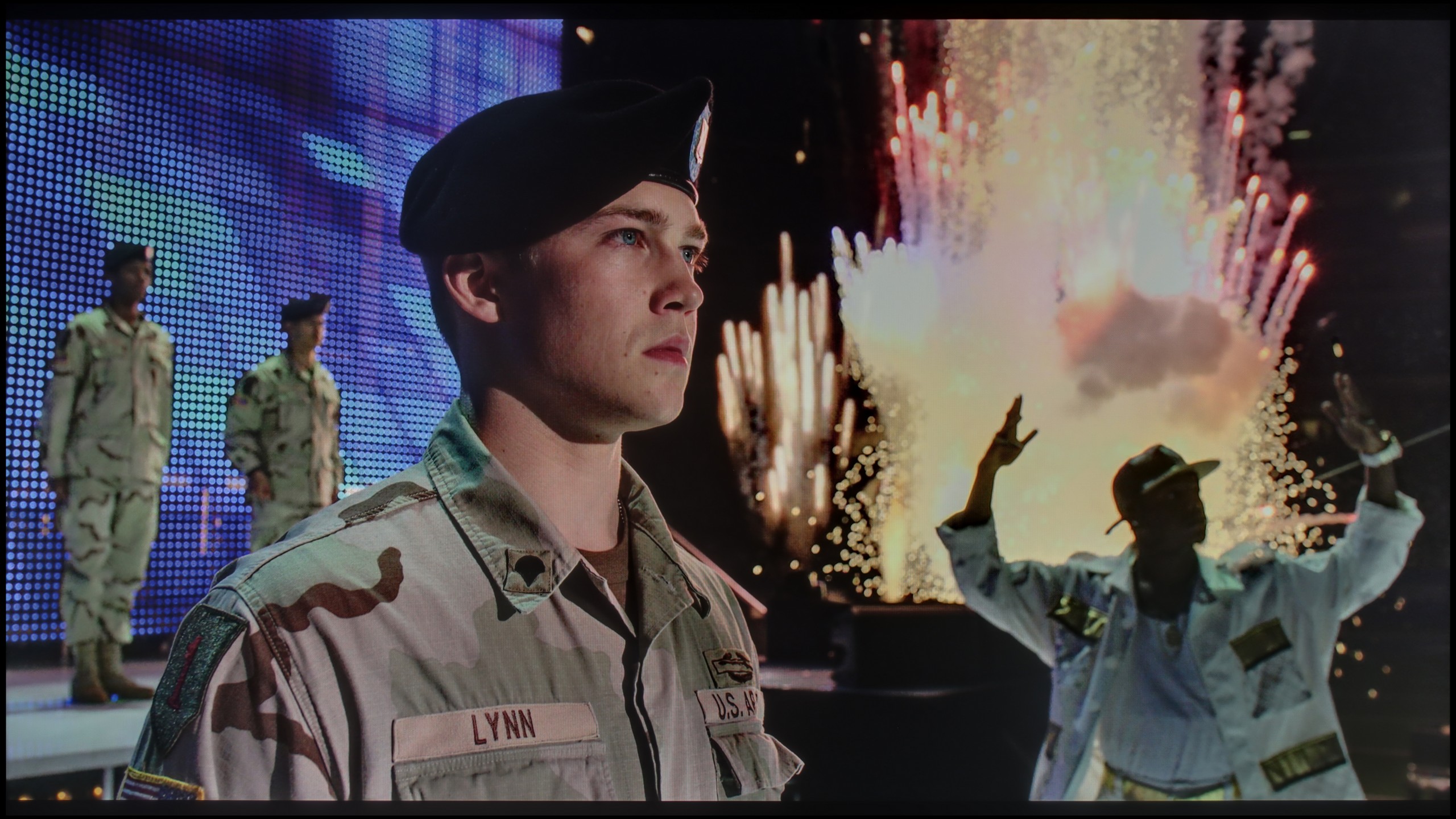
Static HDR10


Dynamic: Dolby Vision
Dynamic: HDR10+


HDR luminance chart:
Philips PUS8500
Luminancja HDR
Luminance of RGB colors
TCL C655 / C69B (55"-85")
Luminancja HDR
Luminance of RGB colors
Overall, the quality of HDR performance in TCL C655 / C69B looks quite promising. The average value in test patterns is around 450 nits, which already allows one to feel the effects of lighting and better image dynamics. However, as mentioned earlier, this effect may be partially suppressed by slight differences in bright and dark colors, resulting from the lack of local dimming technology. However, the DCI-P3 color gamut coverage of 94% deserves high praise, and this is made possible by the use of a quantum dot (QLED) panel. As a result, colors are vibrant and well-reproduced when watching HDR content.
When it comes to HDR performance on the PUS8560, one can confidently say that it is quite average. The brightness of the panel is around 350 nits, which we consider to be the absolute minimum for viewing content in this format. However, this is not a result that will impress viewers looking for the best possible image.
On the plus side, it is worth noting that the PUS8500 series – including the PUS8560/12 we tested – is marketed as a QLED television. And indeed, we can expect a wider color gamut here. This model is equipped with an additional filter (PFS), and the coverage of the DCI-P3 color space at around 90% should be sufficient for the majority of users. This filter works very similarly to quantum dots. As a result, the colors are quite well saturated. It’s not an outstanding result, but perfectly adequate for watching movies and series on streaming platforms.
Factory color reproduction
4.2/10
6.2/10


Factory Mode
After calibration

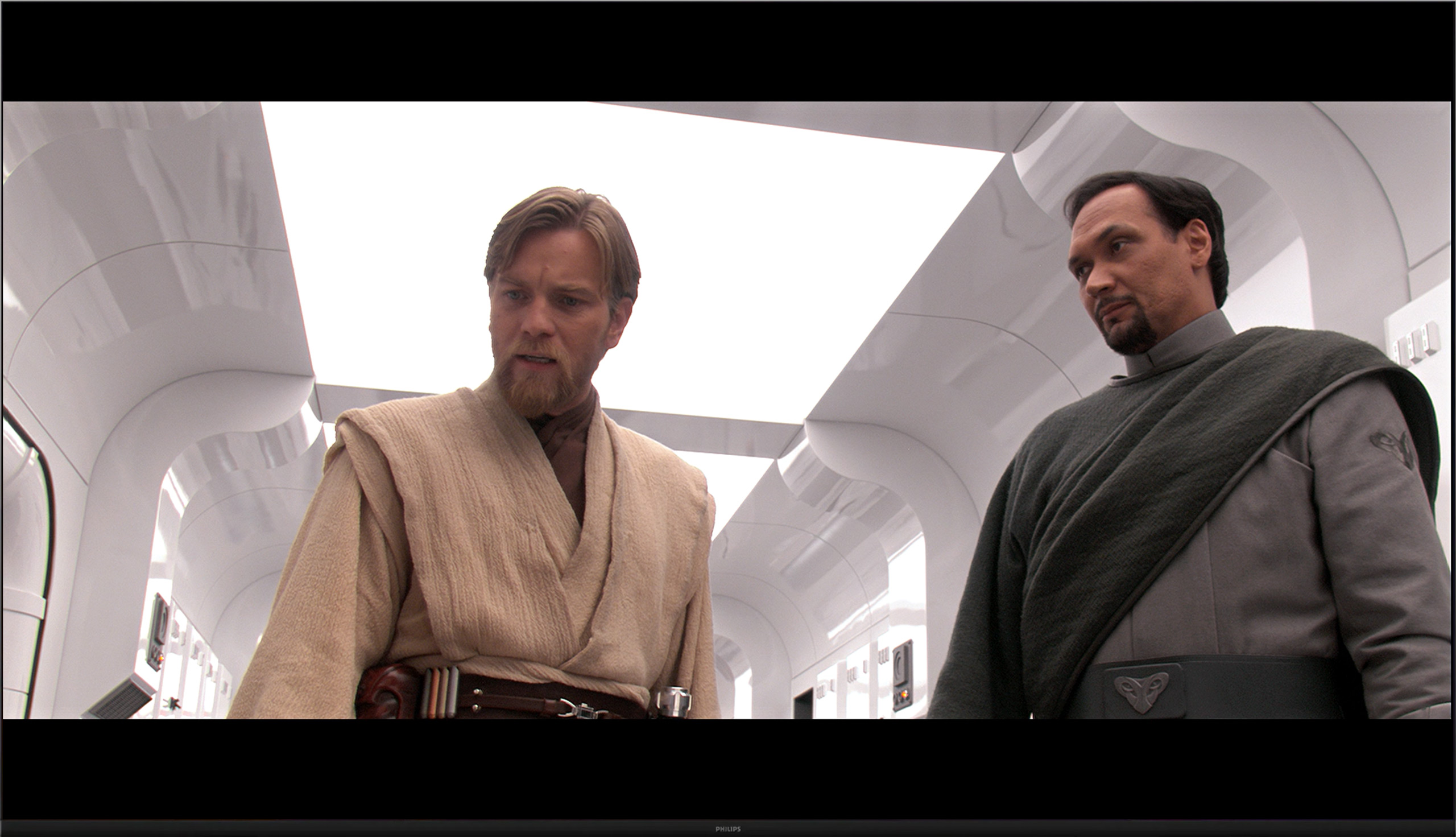
Factory Mode
After calibration
The TCL C655 / C69B television offers a movie mode that has been tested for color reproduction quality. Although this mode is called movie mode, unfortunately, it has quite a few errors that a director would certainly not want to see while recording their work. Starting with image analysis, it's worth looking at the white balance - both in HD and 4K HDR content, the white balance has significant errors. In both cases, the red color dominates, making the colors too warm, and overall it has a pink or yellow tint. This can be seen in the picture below from the movie "Star Wars." The Colour Checker test confirms these errors - the color samples stray into inappropriate shades, affecting the overall color fidelity. A minor issue is the brightness characteristic. However, it is also not free of flaws. The gamma chart shows a strong spike at the beginning, causing the image to be overly bright, and the EOTF curve responsible for brightness in 4K HDR material shows significant fluctuations as well – it is visible how the television tries to maintain proper brightness, but it does not always succeed effectively.
We tested the TV on the best available factory settings, which is in Film/Filmmaker mode – this is the mode we recommend for everyday viewing. Unfortunately, it is not without its flaws. Both in HD and HDR content, the image had a clear tendency to appear pinkish, caused by too much red and blue in the white balance. Another problem turned out to be excessive brightness of the image, which was confirmed by both the gamma chart and the EOTF curve. This characteristic was responsible for the loss of detail and washed-out colors in more challenging HDR scenes, as we mentioned earlier. Overall, this led to quite significant color reproduction errors – in extreme cases, the delta E value exceeded 7, while the threshold of visible errors for the human eye is about 3. This situation can be improved through calibration, and you can read about its effects below.
Color reproduction after calibration
8/10
8.4/10

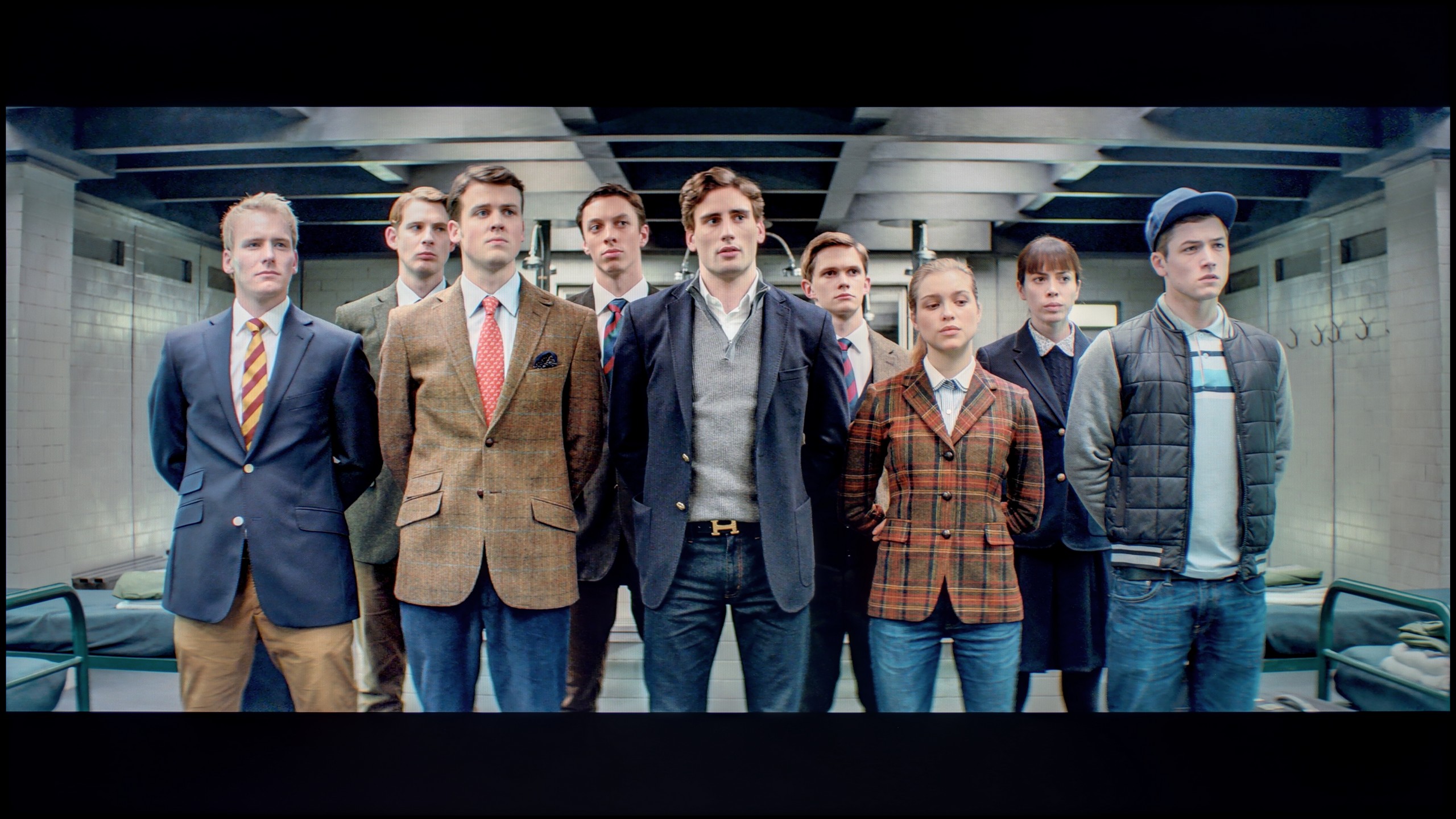


After calibrating the movie mode of the TCL C655 / C69B television, the white balance has been equalized, and the colors look as they should – which is confirmed by only slight deviations in the Colour Checker test. The gamma is really accurate, which means the television should not have issues with brightness in low-resolution materials. Unfortunately, a similar EOTF characteristic is still visible, which is a natural phenomenon in televisions that do not have local dimming – they simply struggle to “shine” more brightly in a given part of the screen. Despite this structural limitation that cannot be overcome, we recommend adjustments in the settings, as the overall color representation looks really very good.
The Dutch manufacturer offers quite a large dose of settings in their products, so as usual, we decided to dig a little into them. The effects are immediately visible – we managed to correct the white balance, which made the image stop appearing excessively pink. The brightness characteristics were also partially balanced, of course, within the limits that the television itself allows. The image is no longer overly vibrant, and the overall reception after calibration is definitely better than in the factory settings of the Filmmaker mode.
One could only criticize the characteristics of the EOTF curve, which still indicates that the image tends to lighten materials in HDR format. Despite our efforts, the darkest parts of scenes can still be too bright, and the brightest do not always reach their full contrast potential. However, it must be clearly stated that we are dealing with a typically budget construction – you cannot expect reference-quality reproduction of HDR content from it.
Calibration definitely helped this model – it improved the balance, toned down the aggressive color scheme, and brought the image closer to what one might expect from a well-configured movie mode. However, there are certain limitations that cannot be overlooked.
Smoothness of tonal transitions
4.5/10
6.3/10

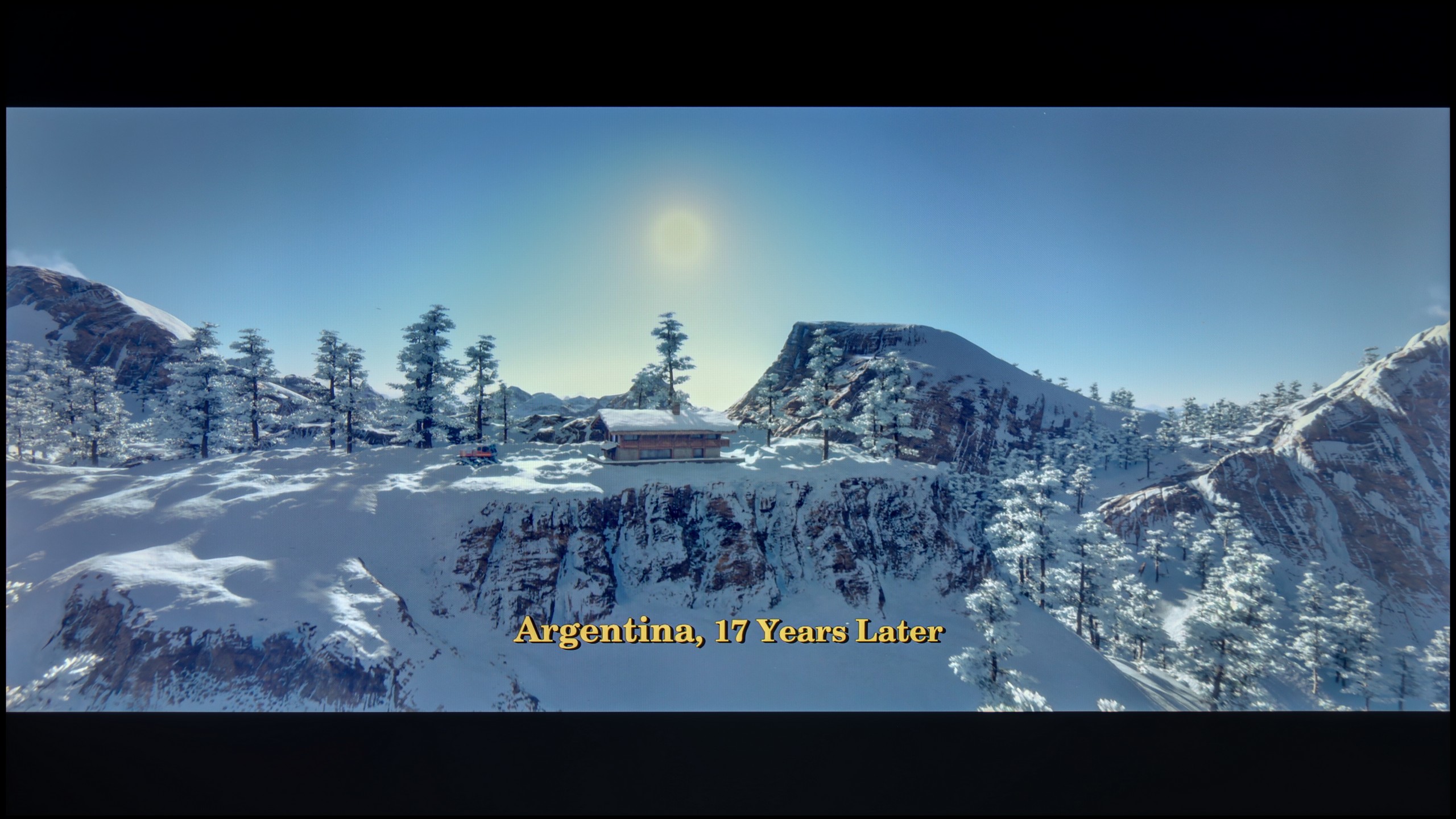

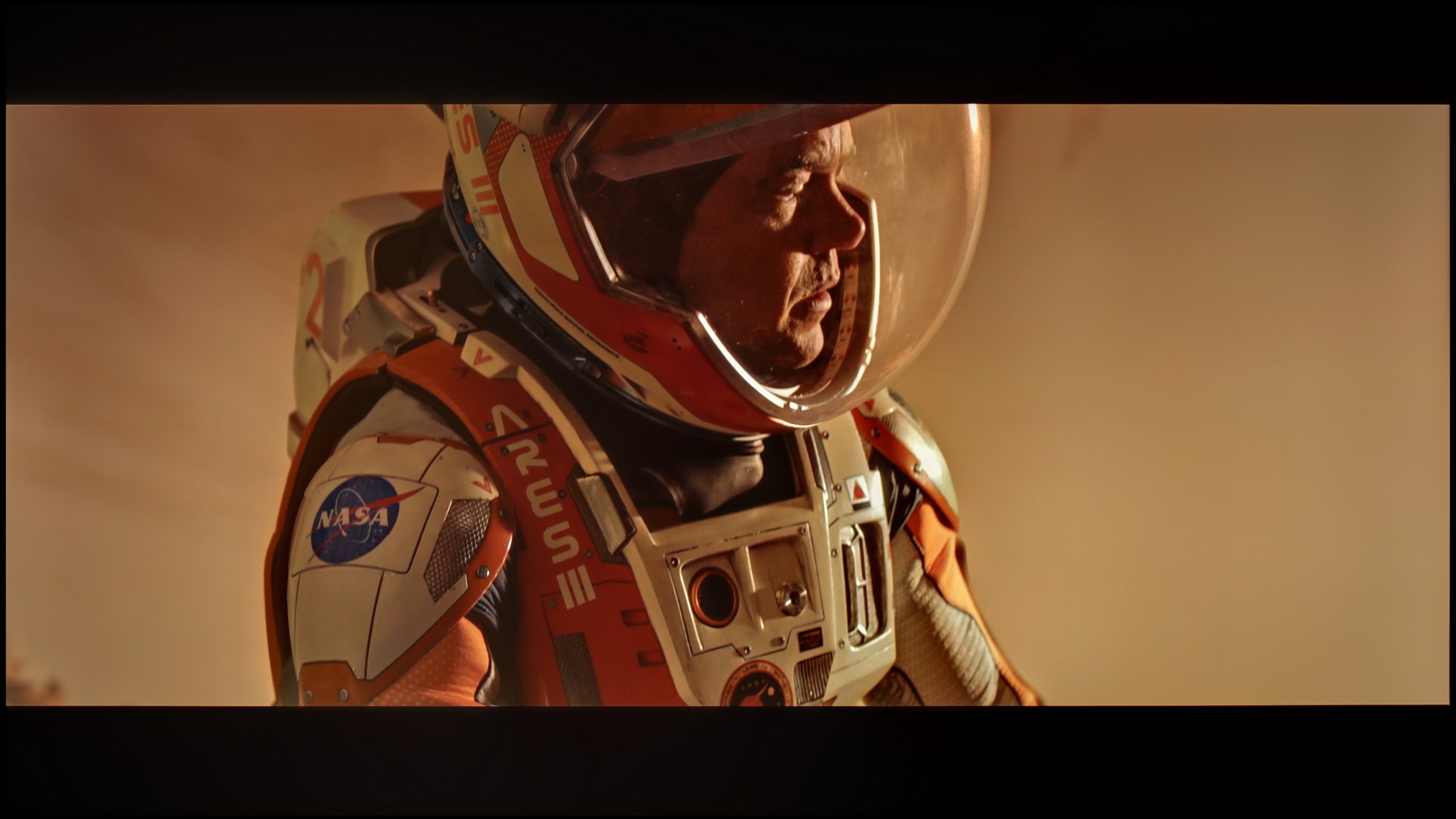

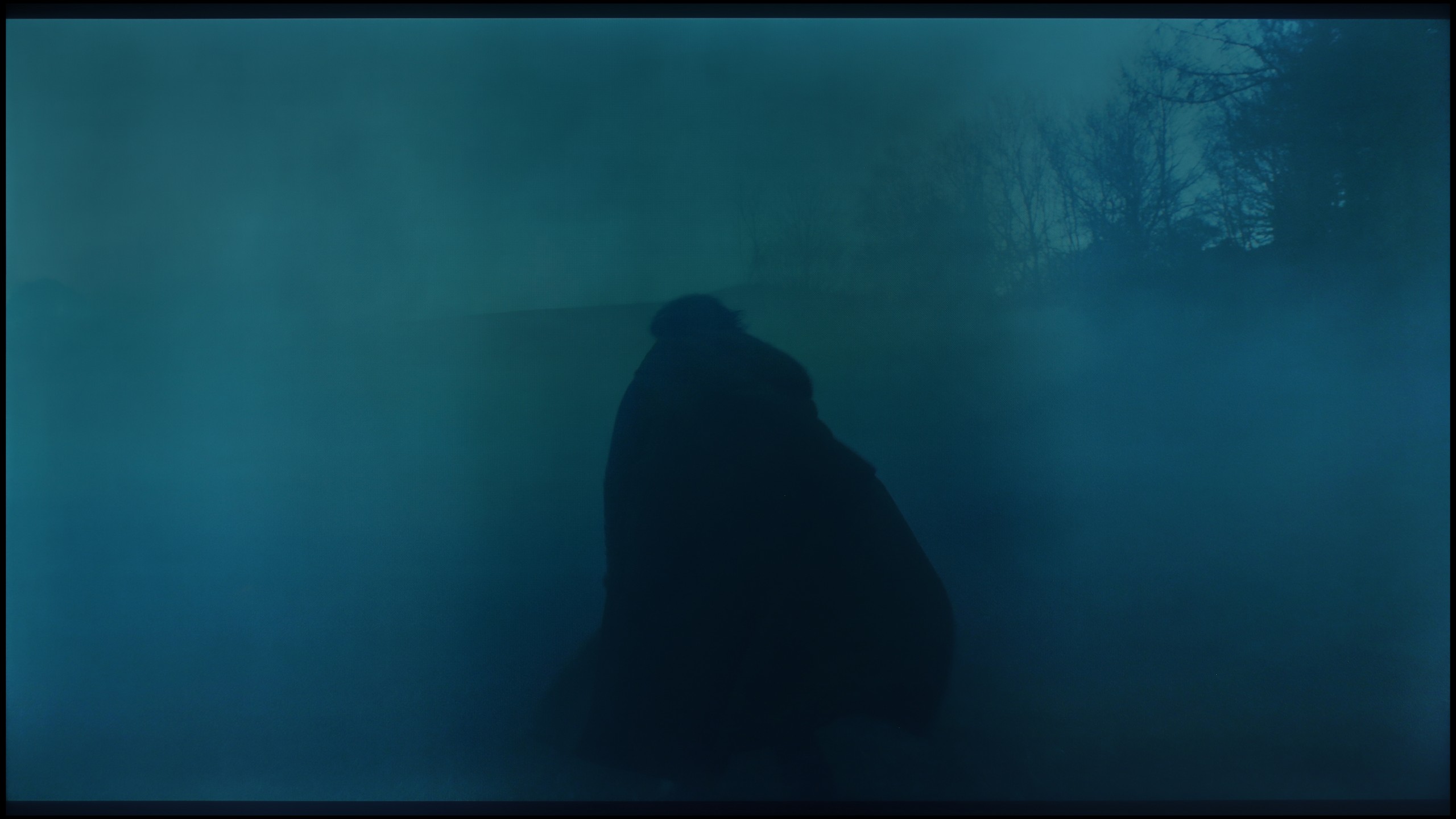

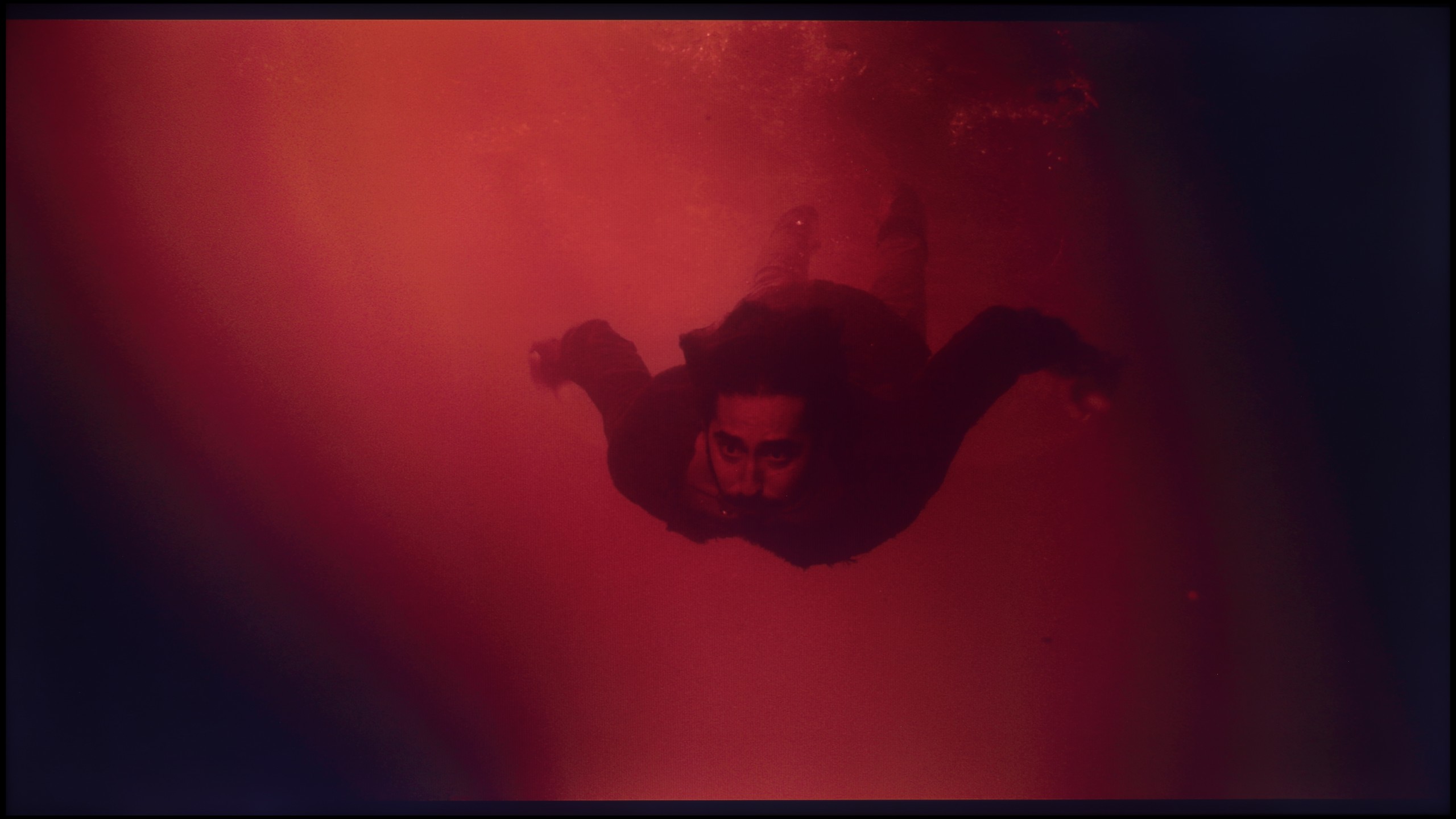




The tonal transitions in TCL C655 / C69B are really good and would deserve a high rating; however, the score has been clearly reduced for another reason - the image is artificially sharpened despite the "sharpness" setting being at 0. This causes the image to be unpleasant to look at. While this may be unacceptable for purists, those less concerned with perfect image reproduction may find this effect appealing.
The PUS8560 handles color blending into smooth gradients very well. During testing, the image appeared cohesive and natural, with more serious issues with tonal transitions occurring only in very dark scenes – for example, in a shot with red water, where subtle cuts between colors could be seen. However, these are rather exceptions that do not spoil the reception of most content. It is worth mentioning another phenomenon that has a greater impact on image quality – the so-called dithering, or slight "sparkling" visible on solid backgrounds. This effect can be particularly noticeable in high-quality materials and may slightly detract from the impression of image clarity. It is for this flaw that we deducted some points in the rating.
Image scaling and smoothness of tonal transitions
5/10
6.1/10
Smooth transition function

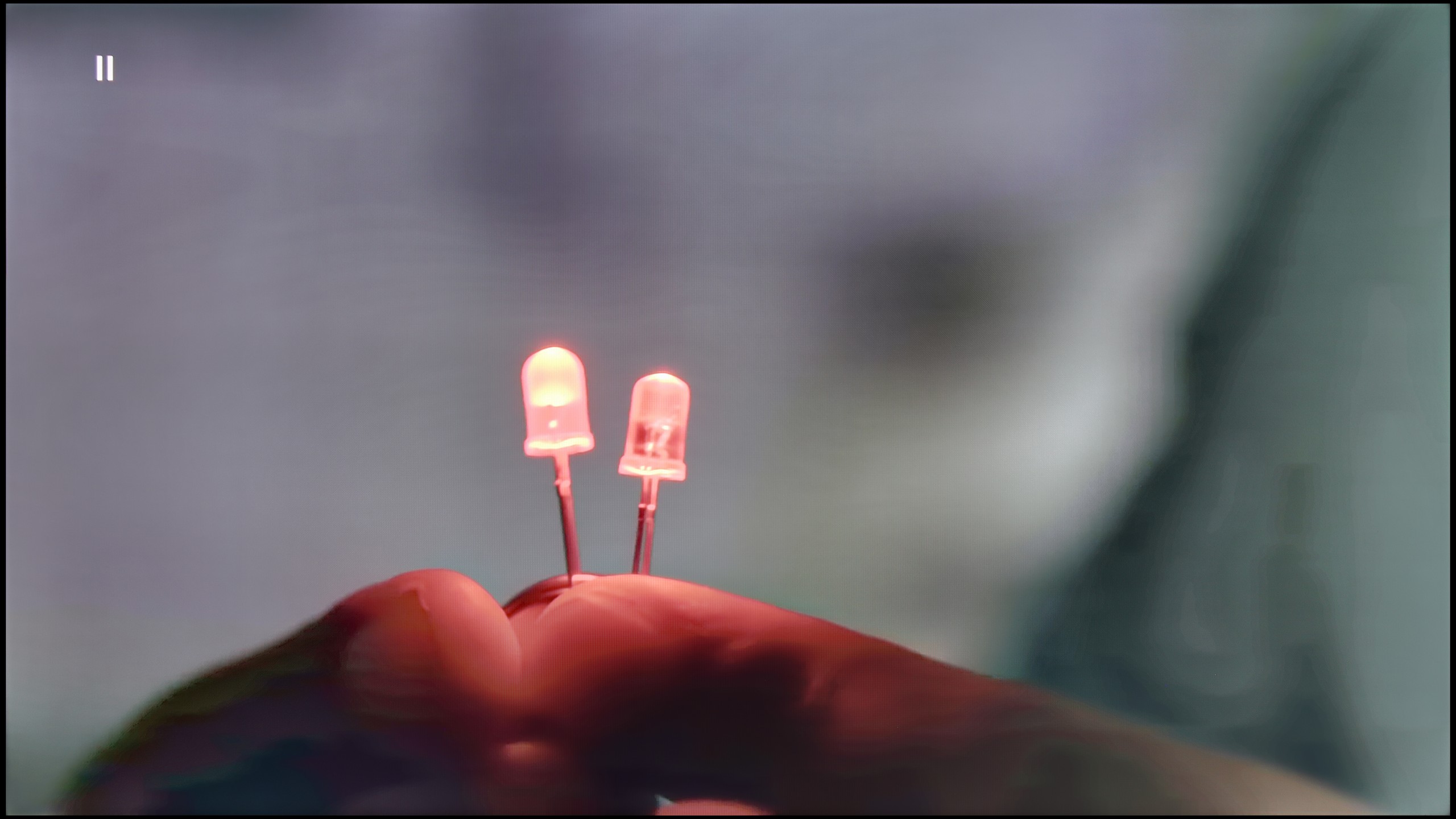
Image without overscan on the SD signal


The TCL C655 / C69B television handles tonal transitions in low-quality materials pretty well. The "Gradual Smoothing" feature at a low setting effectively smooths tonal transitions, but at the same time, it blurs important details, such as the texture of objects. On the positive side, it does not negatively affect film grain, allowing for a natural look of the image. As for digital processing, the television adds artificial sharpness, which may appeal to some users who prefer a sharpened image. However, for those who prefer a softer look, this may be a disadvantage. A downside is also that the image has been quite heavily cropped by so-called overscan, which reduces the field of view and cuts off the edges of the image.
Philips PUS8560 offers a feature that reduces posterization, hidden under the name "distortion reduction." And while it indeed serves its purpose by smoothing problematic tonal transitions, it operates a bit too broadly. In practice, it affects not only colorful gradients but also softens faces, clothing textures, and furniture surfaces. This decreases the authenticity of the image—especially in films where natural texture is of great importance. However, if someone is looking for smoothing at all costs, it's best to set this option to "Low." For cinema image enthusiasts—definitely not recommended.
On the plus side, the quality of upscaling older materials should be noted—the PUS8560 model handles them surprisingly well. The image maintains a natural softness without artificially enhanced sharpness. It is also worth mentioning that the television correctly displays very low-resolution content, avoiding problems with cropping the edges of the image (so-called overscan).
Blur and motion smoothness
4.7/10
4/10

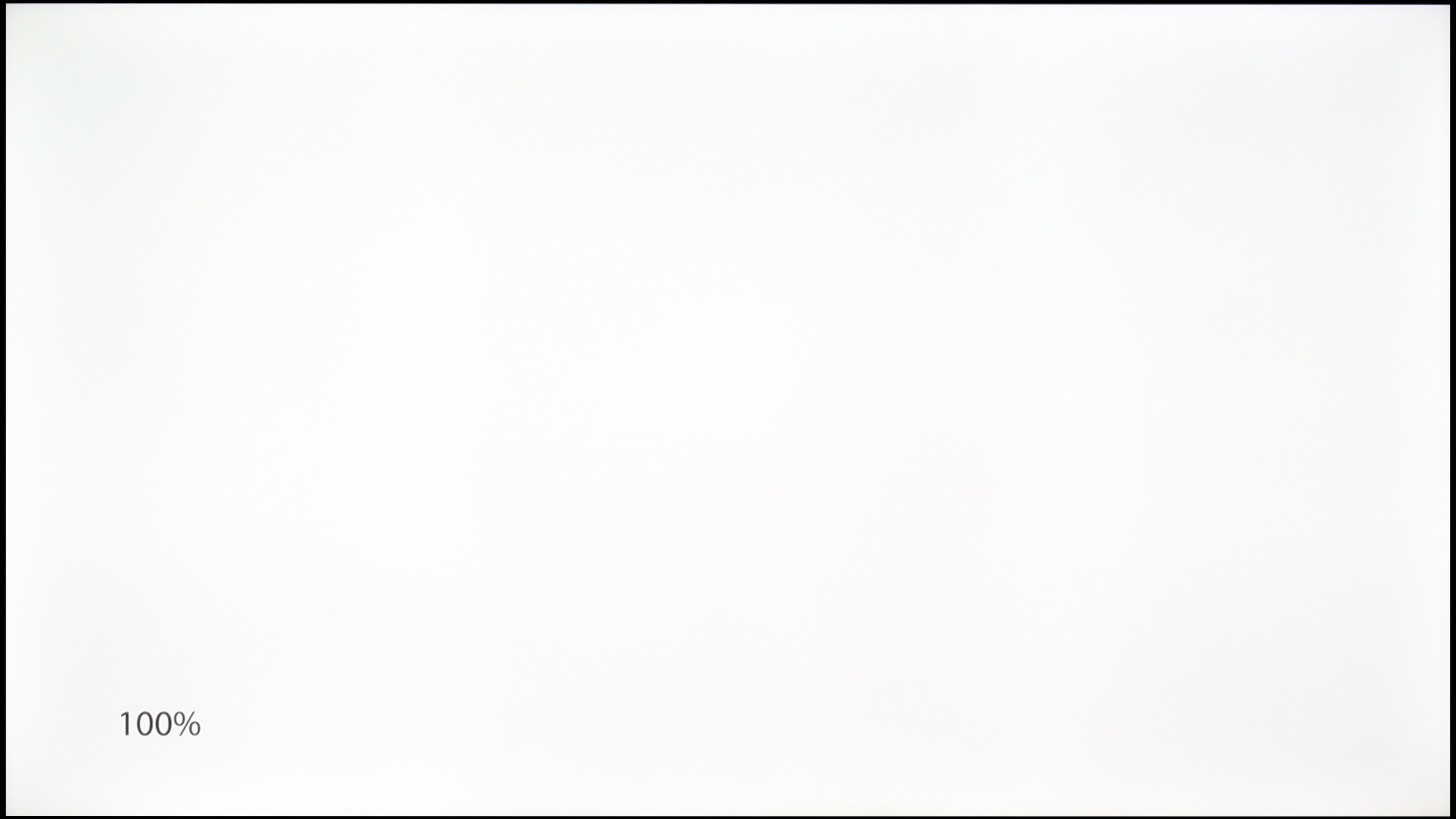
Blur (native resolution, maximum refresh rate):




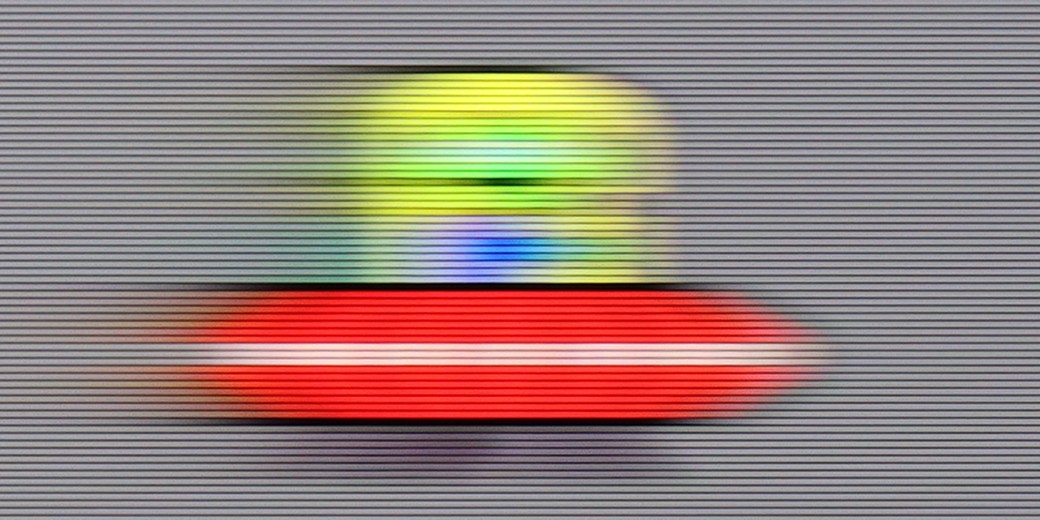
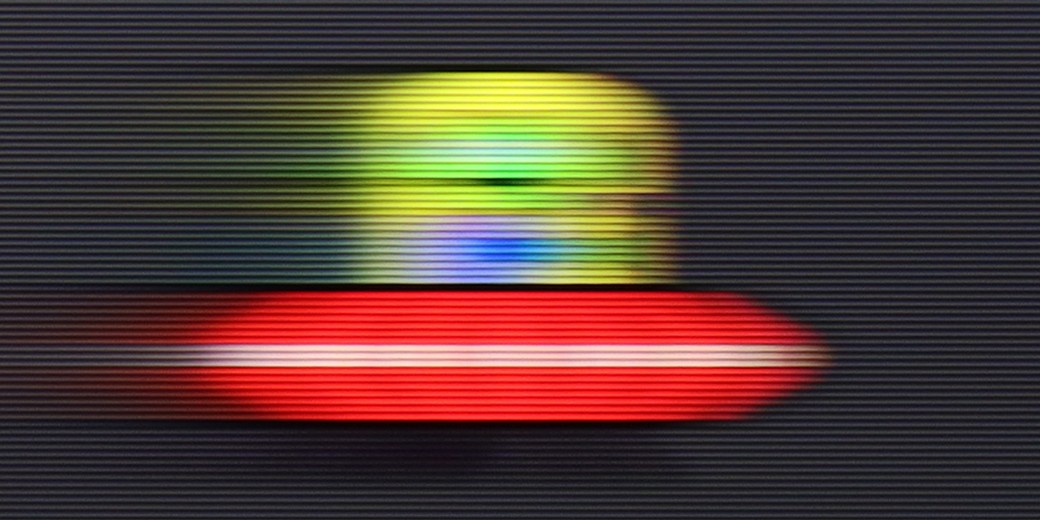
Smużenie (1080p 120Hz):



Smużenie ():
The C655 / C69B TV is equipped with a 4K@60 Hz panel, which means it performs best when watching movies and less dynamic content. It also has a "Flicker Reduction" feature that allows for adjusting the fluidity of the image – users can choose whether they prefer smoother motion or a more cinematic, frame-by-frame effect. The TV can also adapt to lower resolutions, such as Full HD and 2K at 120 Hz, which will definitely please gamers by offering a smoother image at the cost of resolution. It is worth noting that this feature is available in sizes from 55"+. Additionally, the largest variant, 98", is equipped with a 144Hz panel with full motion smoothing.
The Philips PUS8560 is a television equipped with a 60 Hz refresh rate panel, which already limits its capabilities for displaying dynamic content. Watching sports or playing on a console is not one of the most enjoyable experiences. The situation is further worsened by the lack of any option to improve the smoothness of films. In the menu, we won't find settings that would allow for the activation of a motion smoother or even a slight motion smoothing in films recorded at 24 frames per second. You can imagine the effect. The picture may look jerky, especially in shots with panoramic camera movements.
Console compatibility and gaming features
8/10
4.7/10
- ALLM
- VRR
- VRR range48 - 120Hz48 - 60Hz
- Dolby Vision Game Mode
- Correct implementation of HGIG
- 1080p@120Hz
- 1440p@120Hz
- 4K@120Hz
- Game bar

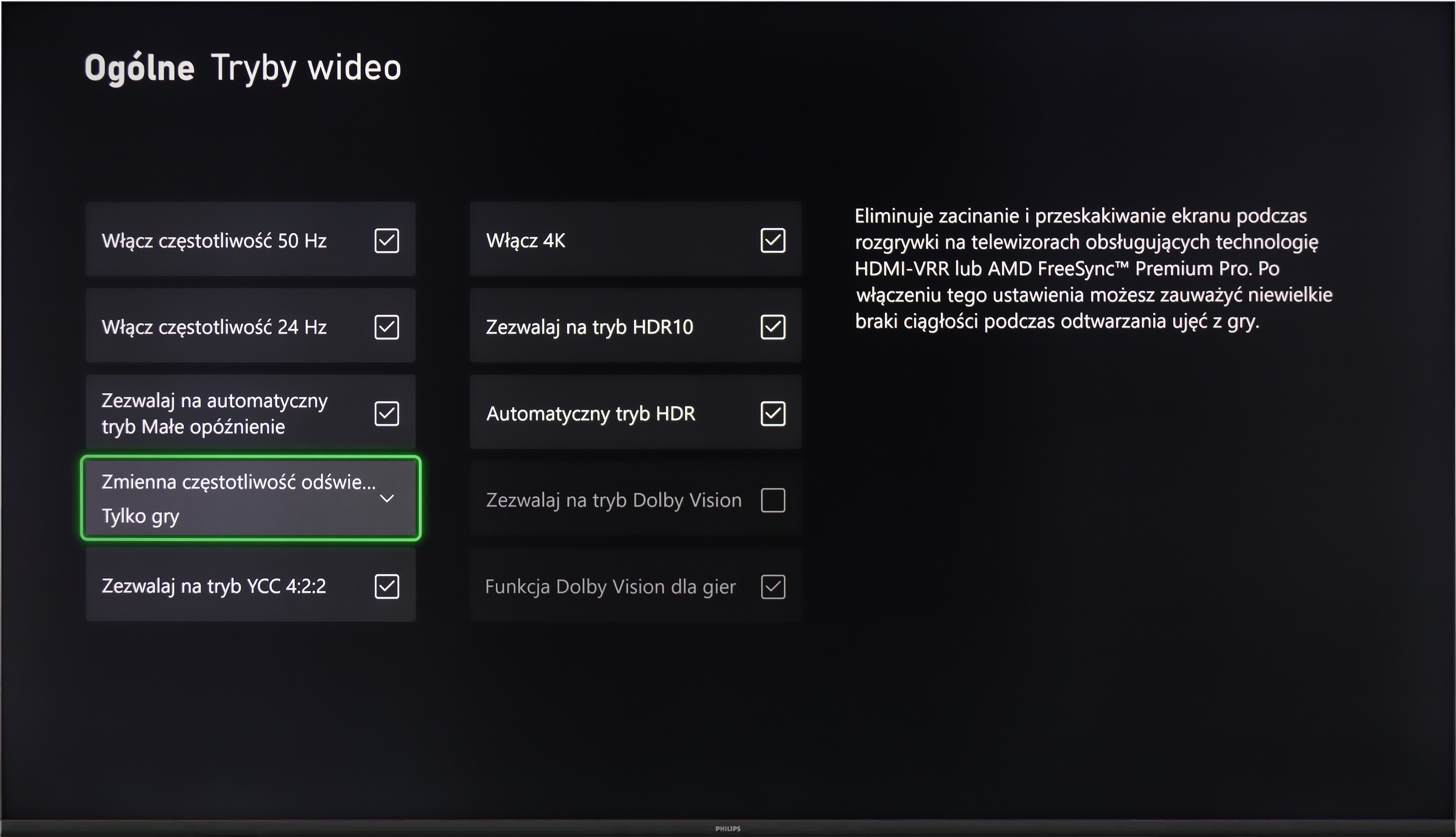

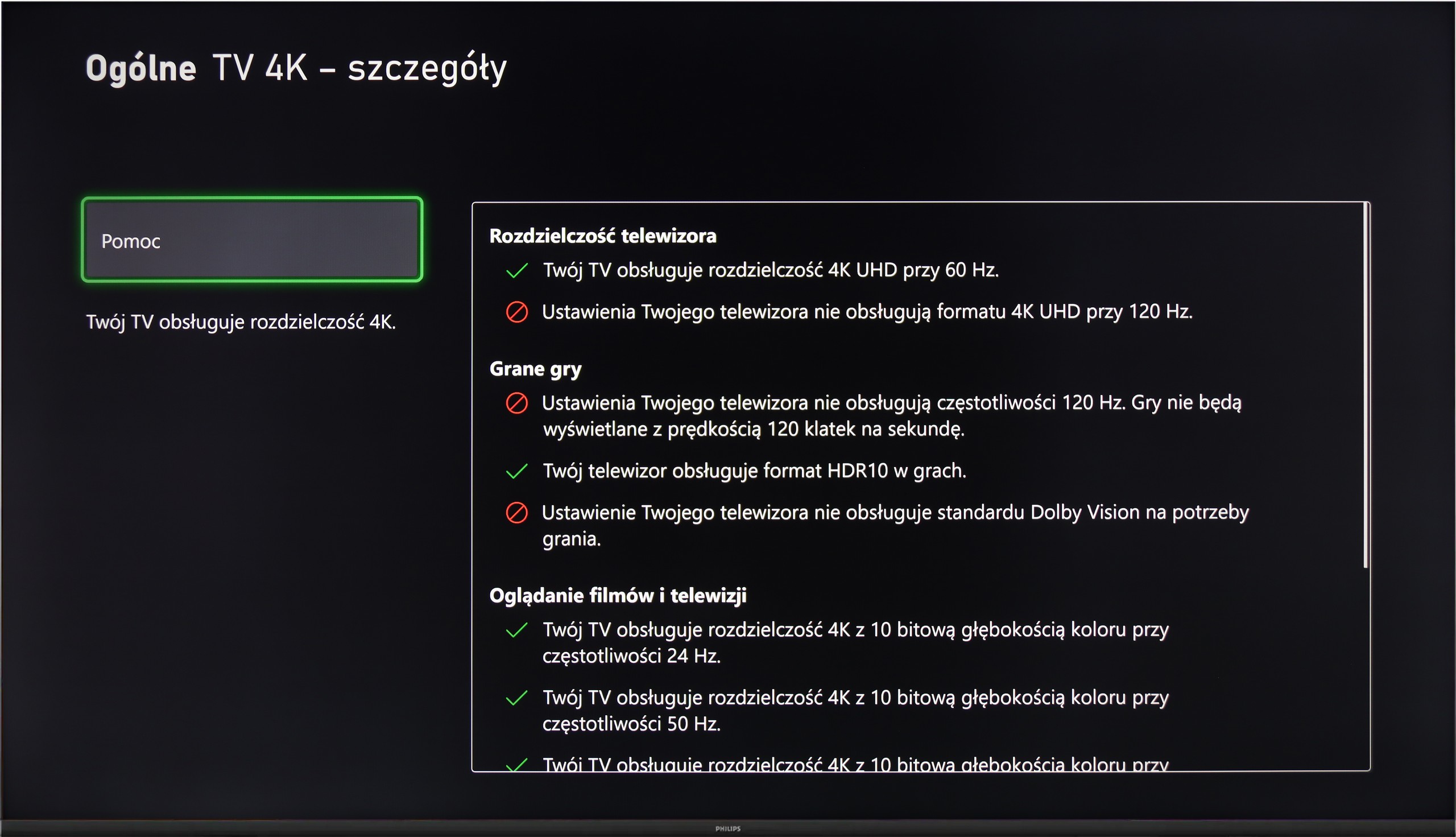

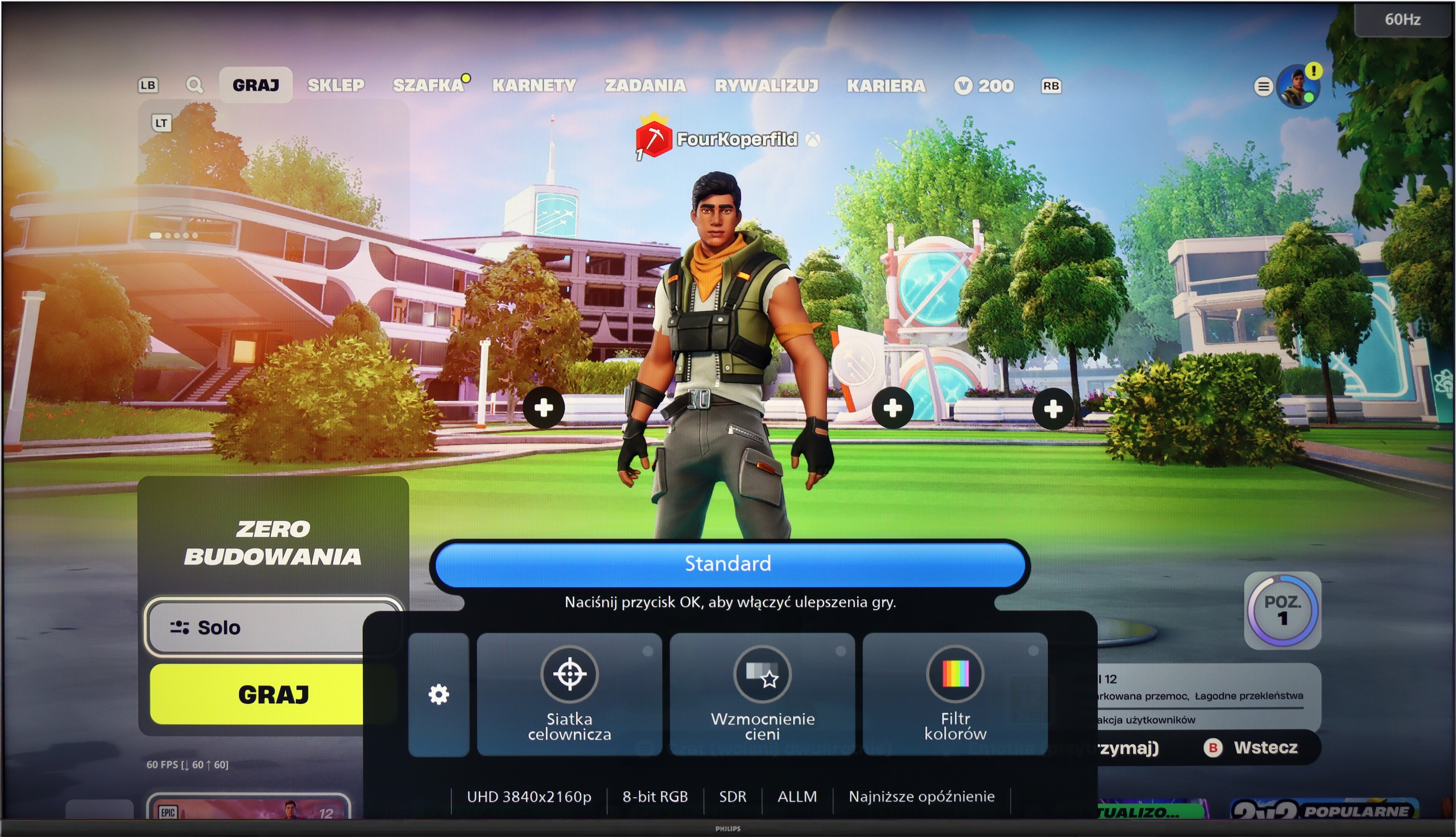

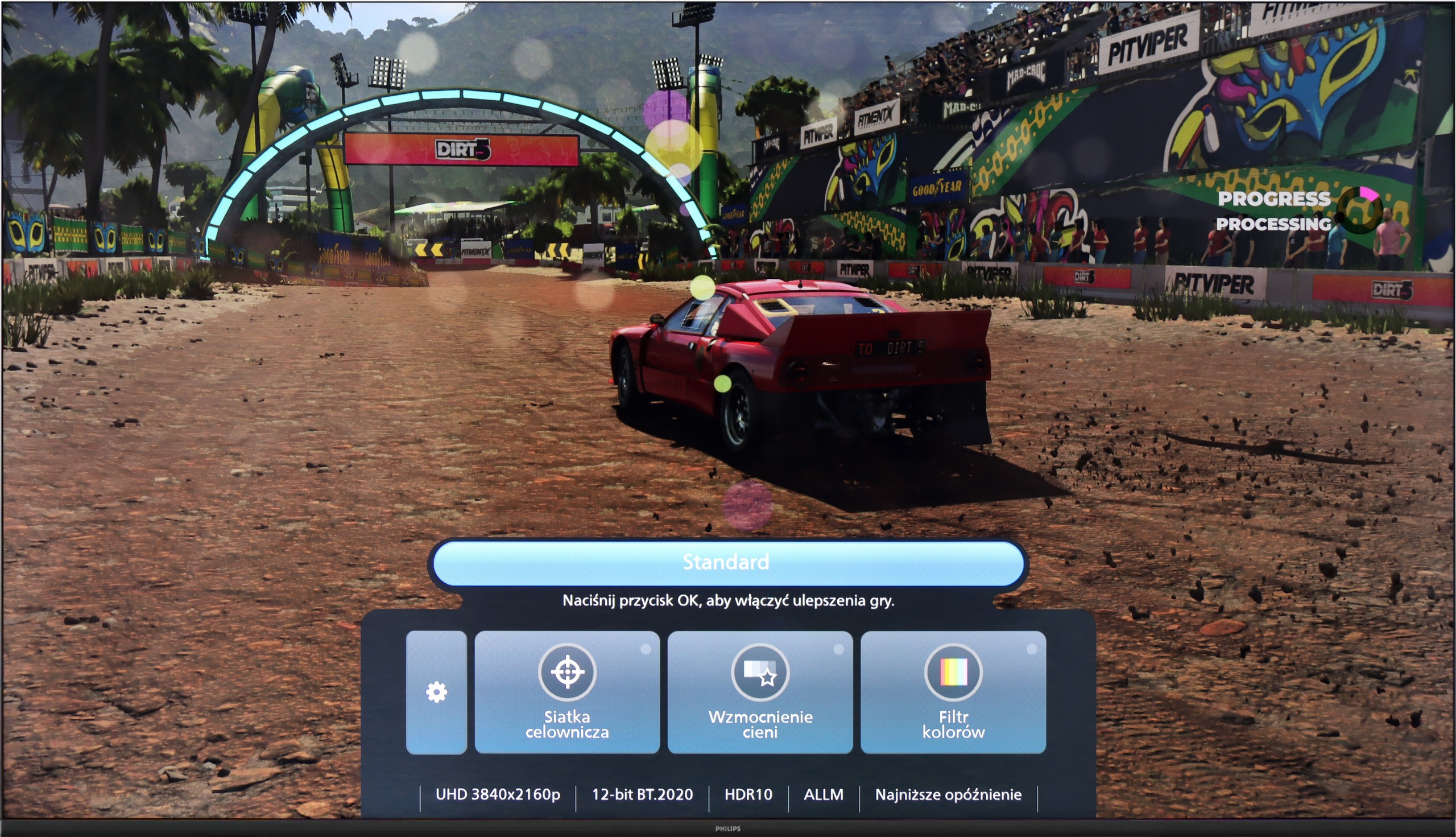
The television TCL C655 / C69B offers an almost perfect set of features for gamers, supporting all the most important technologies. It has an ALLM feature that automatically switches the television to low latency mode, significantly improving responsiveness and minimizing signal delays, which is particularly important during dynamic gameplay. The VRR feature allows for synchronizing the screen refresh rate with the number of frames generated by the console, eliminating the tearing effect and ensuring smoother gameplay.
The television also supports Dolby Vision in game mode, providing better color reproduction and contrast in games that support this format, and the Game Bar enables quick access to gameplay-related settings such as response time, delay level, and other parameters. Unfortunately, C655 / C69B does not support 4K resolution at 120 Hz (with the exception of the 98" variant), which may be disappointing for more demanding gamers who expect the highest fluidity in high-resolution games. However, if we are willing to forgo 4K, the television offers support for Full HD and 2K at 120 Hz, providing a smoother image and being a great alternative for those who prefer a higher refresh rate at the expense of resolution.
Although the Philips PUS8560 is not designed specifically for gamers, the manufacturer decided to equip it with several features that may prove useful when connecting a console. It includes automatic switching to game mode (ALLM), as well as a simple connection status information bar – the so-called Game Bar. While it does not make a particularly strong visual impression, it serves its purpose. The presence of variable refresh rate (VRR), operating in the range of 48 to 60 Hz, might come as a surprise. While this is not a wide range, in the case of less demanding games or titles with unstable fluidity, VRR can help reduce the stuttering effect. However, this is the only element that can be considered above the minimum.
It should be clearly stated that the PUS8560 is not hardware for gamers looking for a responsive screen and full support for modern console features. It lacks HDMI 2.1 ports, the refresh rate is limited to 60 Hz, and the panel's response time is not among the fastest. This model may be suitable at most for casual gamers who want to enjoy the Ambilight system.
Input lag
10/10
10/10
SDR
HDR
Dolby Vision
The TCL C655 / C69B television offers exceptional response time at all supported resolutions and refresh rates. Notably, it supports Dolby Vision with a response time of 13 ms, which is rarely seen among competitors. As a result, gamers can enjoy outstanding responsiveness even when using advanced HDR effects, significantly enhancing the gaming experience.
The input lag on the PUS8560 is very good. When we previously wrote that this screen is more for "casual gamers," there's no shame in this regard – even compared to screens aimed at gamers. Results around 12 ms are truly exceptional, allowing for enjoyable responsive gameplay. It doesn't matter if we are playing in Full HD or 4K – the lag remains just as low, so if you care about quick reaction times, the PUS8560 will definitely not disappoint in this aspect.
Compatibility with PC
6/10
5.6/10

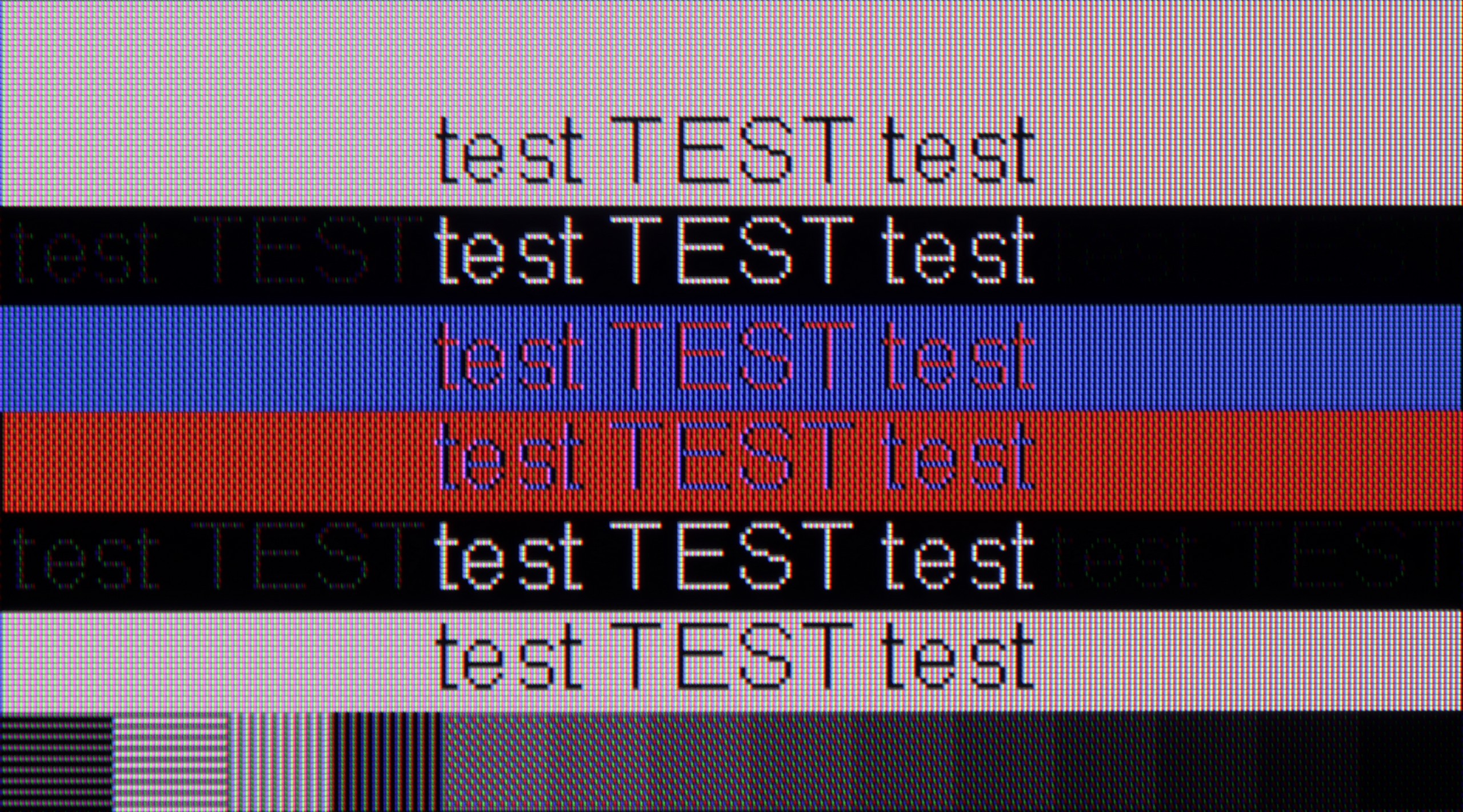
Cooperation with a PC on the TCL C655 / C69B TV is quite good, especially due to the support for chroma 4:4:4, which guarantees good font readability. This is a significant advantage if the TV is to be used as a monitor for office work, where text display precision is crucial. Additionally, the low input lag ensures smooth operation, which will be appreciated by both gamers and users who need quick responses to mouse or keyboard movements. However, the TV has a 60Hz panel for 4K resolution, yet TCL has ensured that you can enjoy smooth gameplay at 120Hz in 2K and Full HD.
One of the minor drawbacks that can be noticed is the fact that vertical lines sometimes have one pixel drop. This can cause letters to appear slightly broken, which in certain situations may slightly reduce work comfort, although overall this issue should not be very bothersome for less demanding users.
When it comes to working with a PC on the PUS8560, it looks... quite strange. Chroma 4:4:4 is present in "Monitor" mode, but there is a problem with gray fonts – not all subpixels light up, which makes the text appear pixelated. On the other hand, in "Game" mode, chroma 4:4:4 disappears, but the gray fonts look correct. In practice, we are therefore forced to juggle settings if we want to have perfectly readable text all the time. And what about gaming on the computer? Our opinion remains the same as regarding consoles – it's doable, but without any fireworks. There is no variable refresh rate for G-SYNC graphics cards, and the refresh rate itself remains relatively low. On the plus side, we can again highlight the very low input lag, which saves the day in fast-paced games.
Viewing angles
2.5/10
3.3/10
The viewing angles in C655 / C69B are rather weak, which is characteristic of VA panels. Compared to IPS panels, which offer significantly better viewing angles and a more uniform image quality regardless of the viewer's position, the VA panel loses contrast and colors even with a slight deviation from the axis. Watching from the side causes a noticeable degradation in image quality – black becomes more washed out, and colors lose their intensity. This is definitely not a television that will perform well in large rooms where viewers watch content from different angles.
The viewing angles on the PUS8560 are exactly what you would expect from a VA panel - they don't perform the best. The image loses quality even with a slight shift off-axis – colors become washed out, and the black starts to resemble a dark navy. This is, of course, the price paid for the better contrast that VA offers directly. In the case of our 55-inch unit, it is still acceptable, especially if the TV is perfectly positioned in front of the couch. But with larger screen sizes or a less central placement in the living room – it could be a problem for comfortable viewing.
TV efficiency during daytime
5.6/10
4.9/10

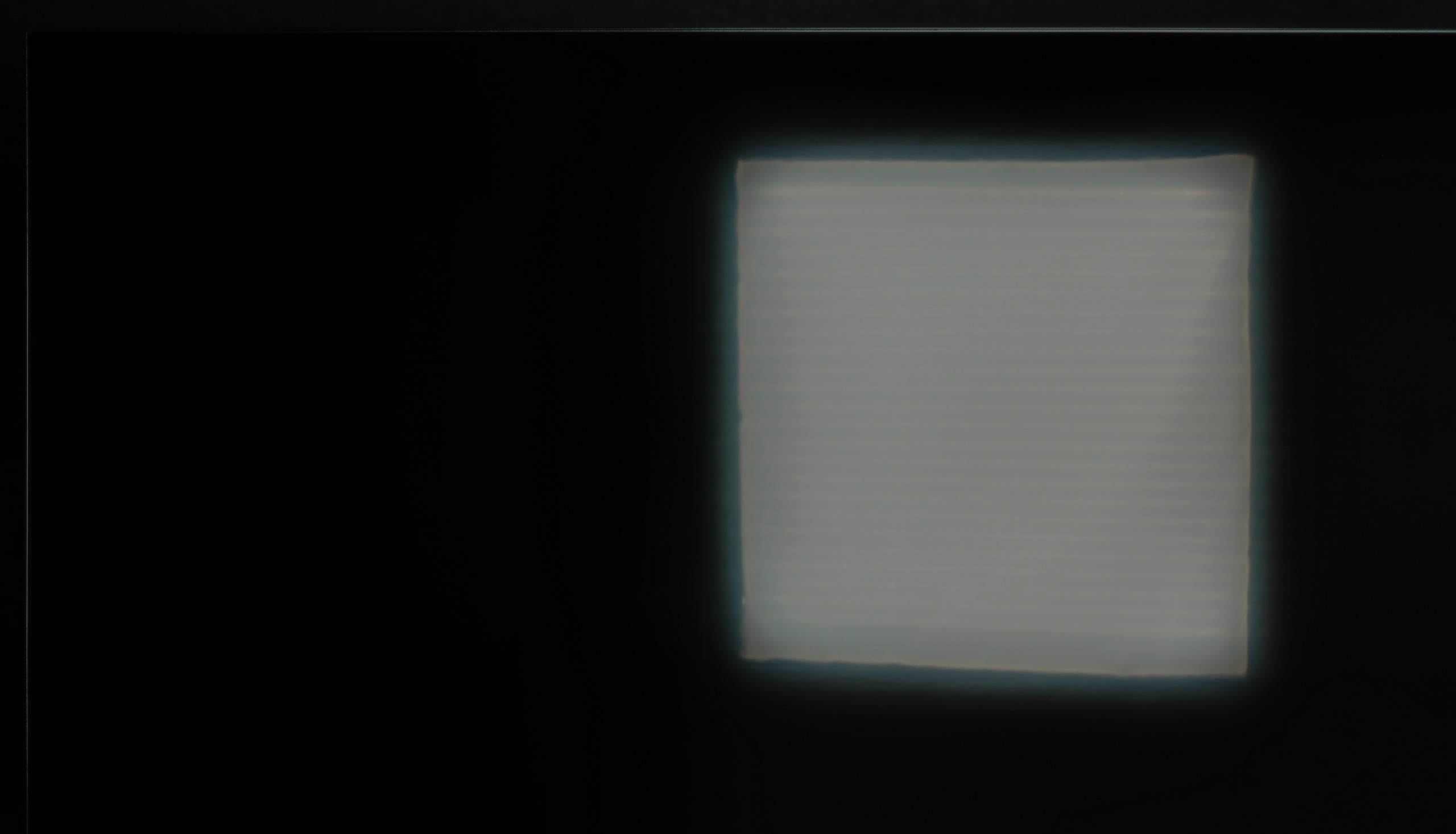

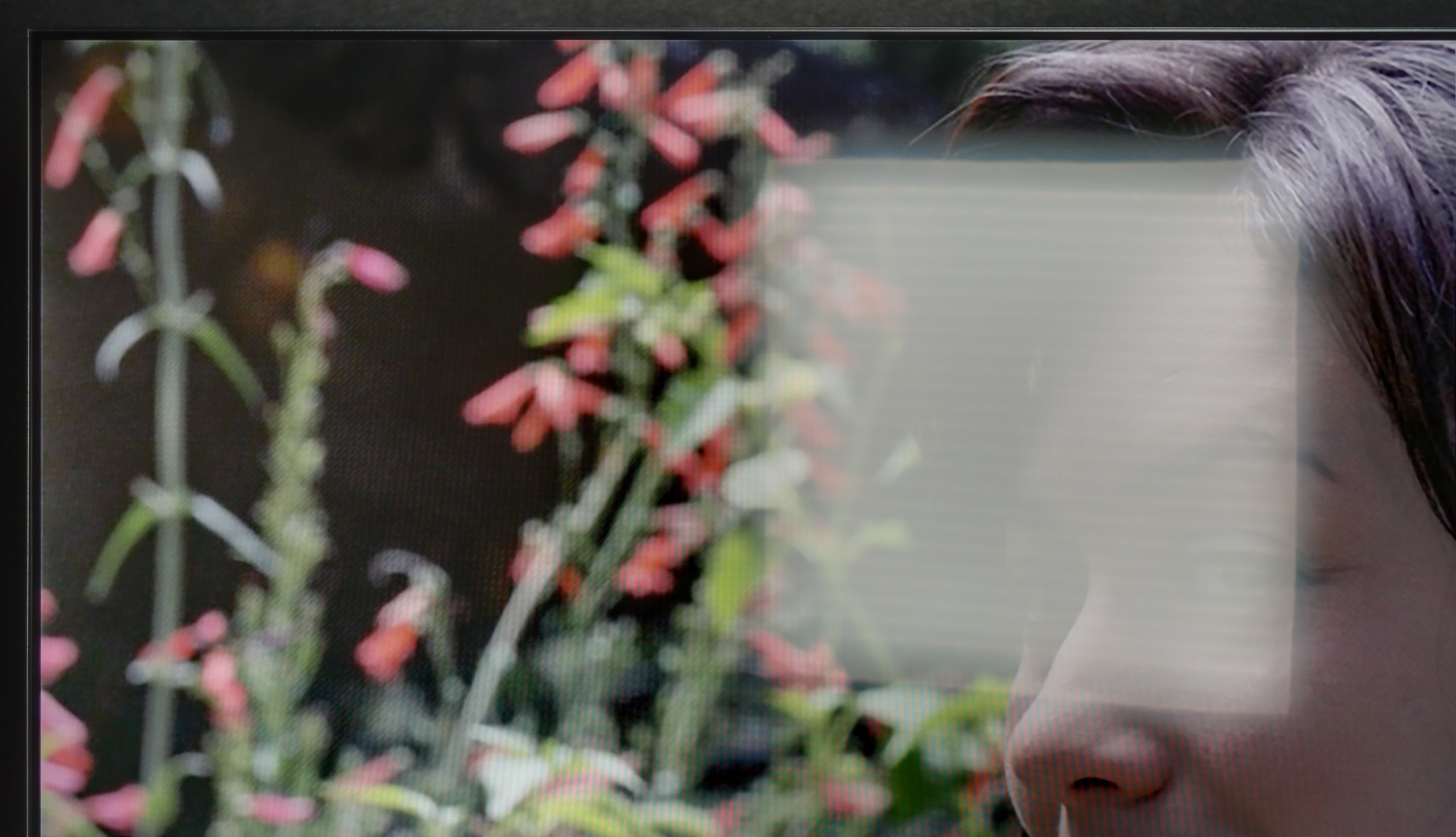
Matrix brightness
Average luminance SDR
Philips PUS8500 : 331 cd/m2
TCL C655 / C69B (55"-85"): 484 cd/m2
In general, TCL C655 / C69B offers quite good brightness at about 480 nits, which allows for comfortable use of the television during the day. This brightness is satisfactory and makes the image well visible even in bright sunlight. Unfortunately, the satin finish of the panel does average in suppressing reflections, which may affect image visibility in very bright environments.
PUS8560 performs moderately during the day. The satin finish of the panel effectively reduces reflections, so light from the window or lamp doesn't interfere too much. The black also looks decent for a VA panel – even in daylight, there are no significant losses in contrast. But the charm fades when it gets really bright. The panel's brightness is around 300 nits, which is definitely too little to speak of full comfort in a brightly lit room. In such conditions, the PUS8560 simply needs to be supported by curtains – otherwise, the picture starts to look quite pale.
Details about the matrix
Subpixel Structure:

Panel uniformity:

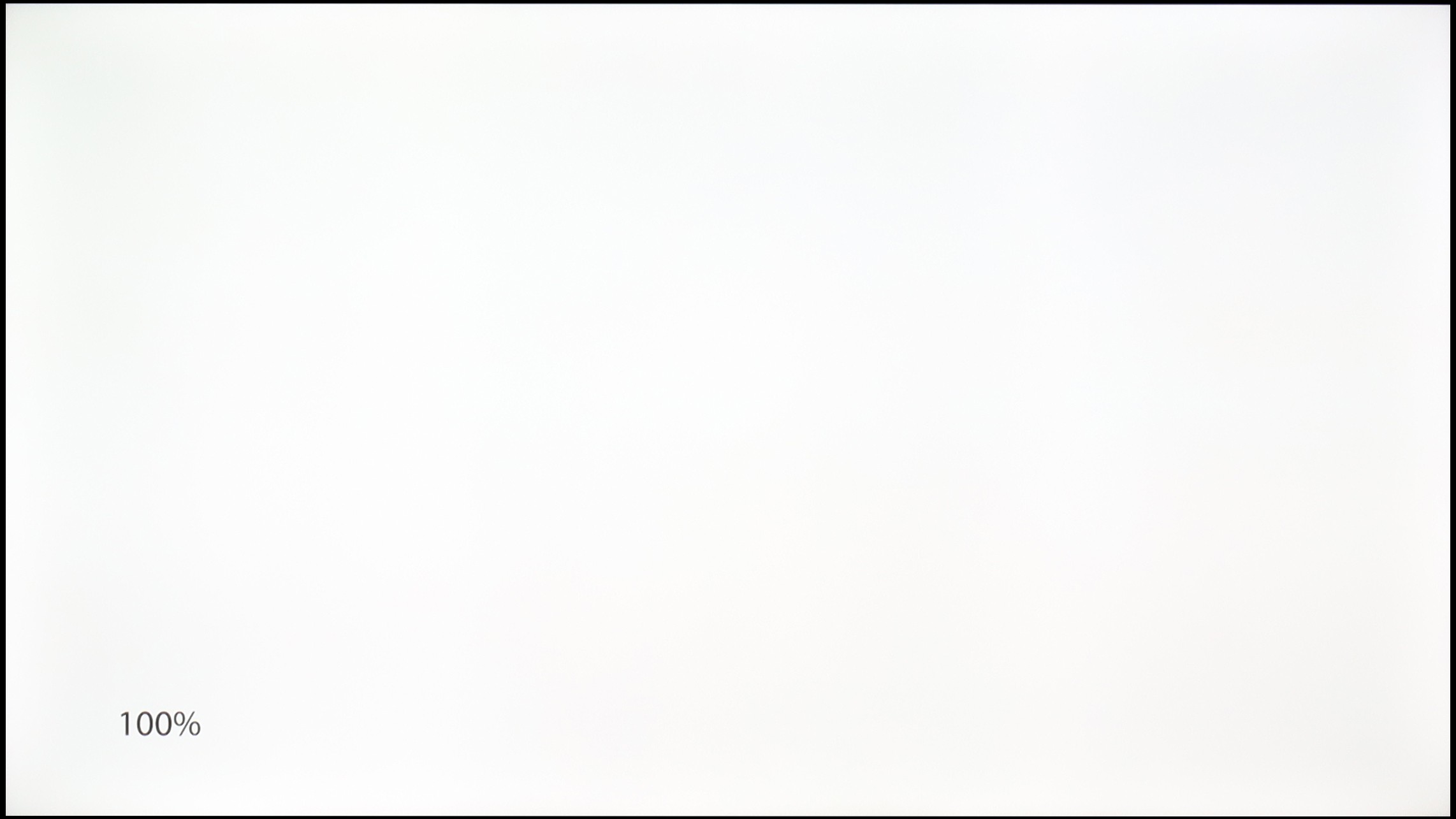
TCL C655 / C69B (55"-85")
Philips PUS8500
TV features
7.1/10
4.9/10
- HDMI inputs3 x HDMI 2.0, 0 x HDMI 2.13 x HDMI 2.0, 0 x HDMI 2.1
- Other inputsRCA (Chinch)
- OutputsToslink (Optical audio), eARC (HDMI), ARC (HDMI)Toslink (Optical audio), eARC (HDMI), ARC (HDMI), Mini-Jack (Headphones)
- Network InterfacesWi-Fi 2.4GHz, Wi-Fi 5GHz, Ethernet (LAN) 100MbpsWi-Fi 2.4GHz, Wi-Fi 5GHz, Ethernet (LAN) 100Mbps
- TV receptionDVB-T, DVB-T2, DVB-S, DVB-S2, DVB-CDVB-T, DVB-T2, DVB-S, DVB-S2, DVB-C
Classic features:
- Recording to USB (terrestrial TV)
- Recording programming
- Picture in Picture (PiP)
- RF remote control (no need to aim at the screen)
- Backlit remote control
- Teletext
- Audio only mode
- Possibility to connect Bluetooth headphones to the TV
- Possibility to simultaneously use Bluetooth headphones and the TV speaker
Smart features:
- AirPlay
- Screen mirroring (Windows Miracast)
- Wyszukiwanie głosowe
- Voice search in native language
- Ability to connect a keyboard and mouse


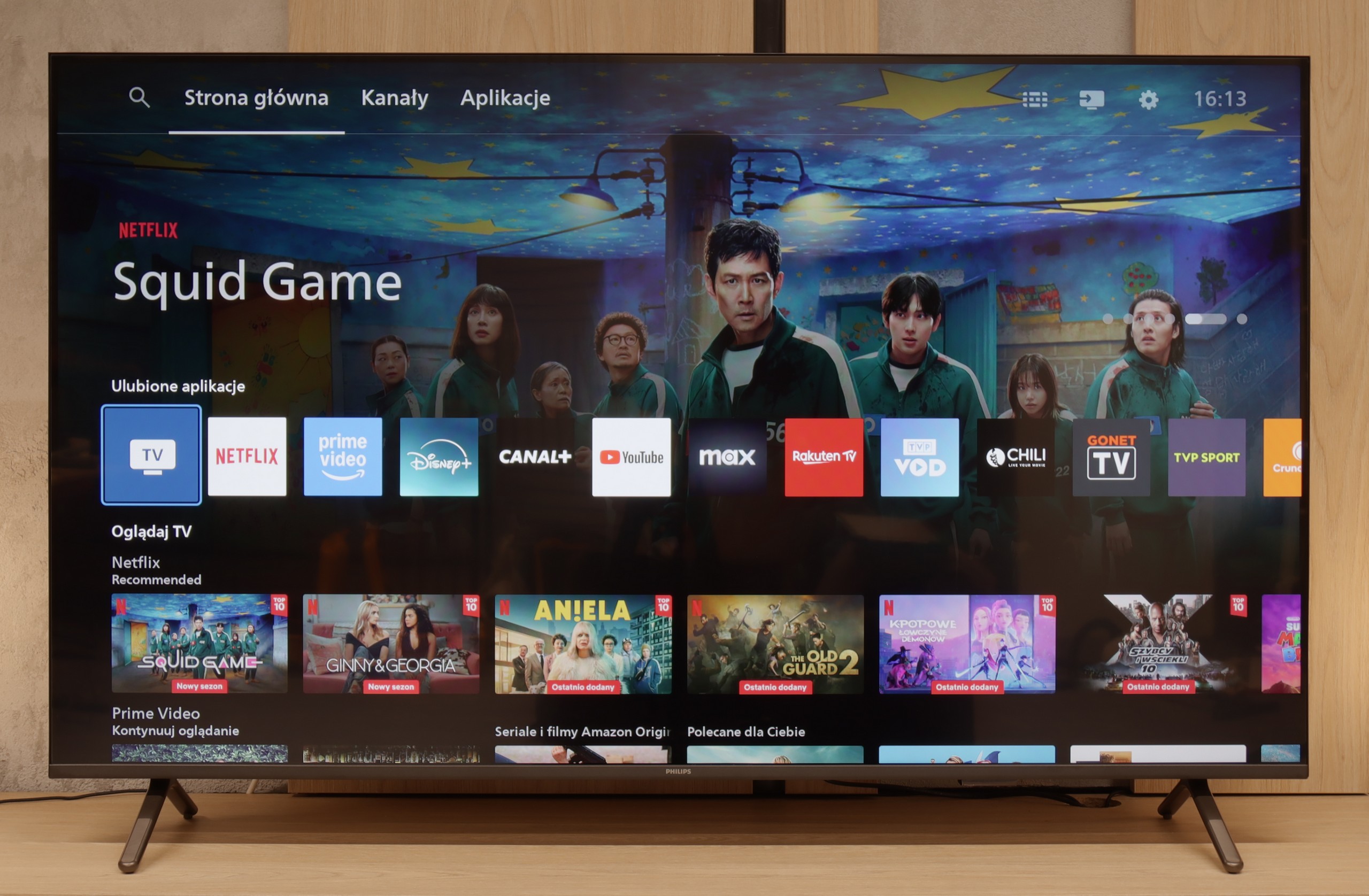
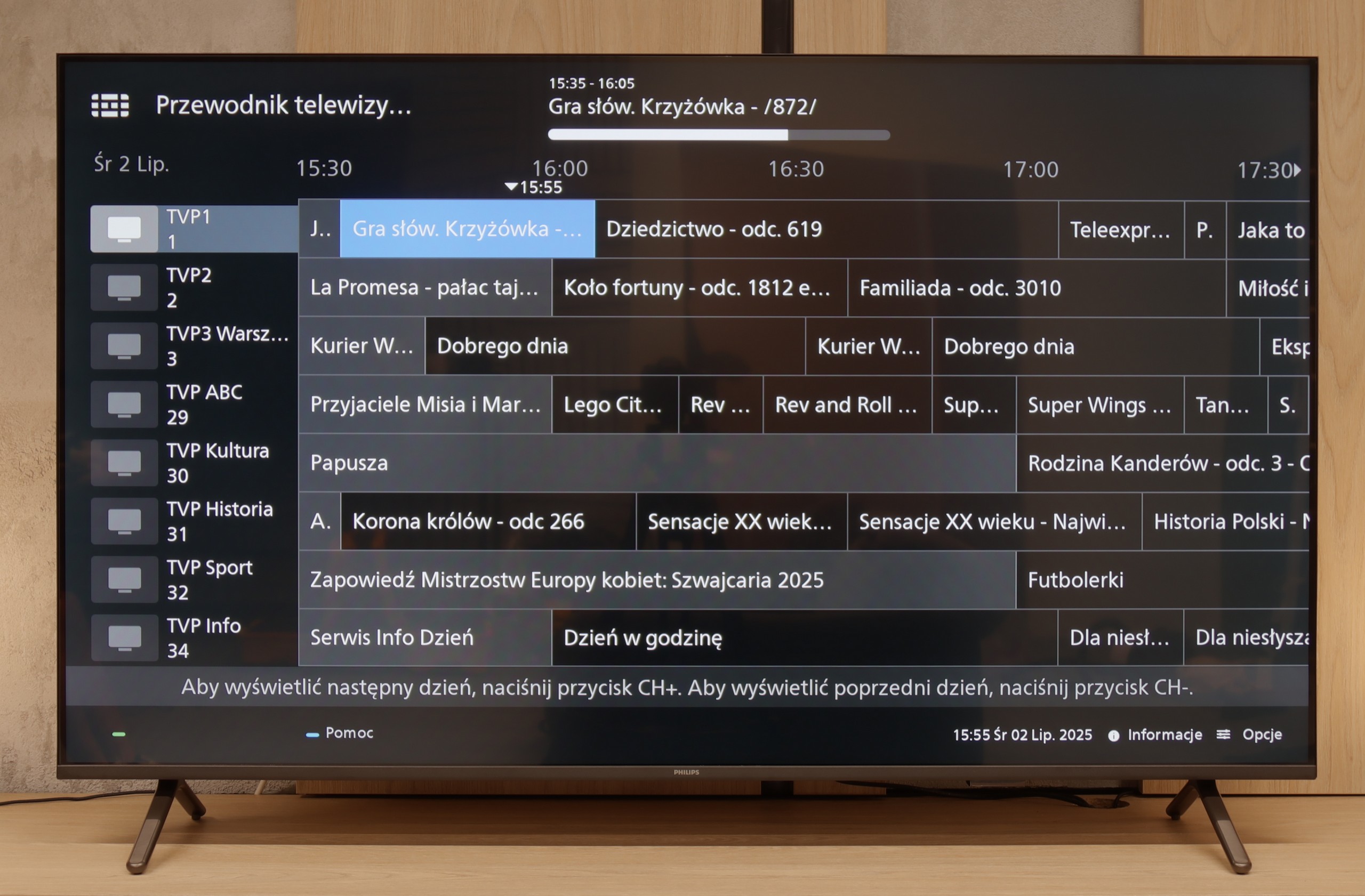
The TCL C655 / C69B television operates on the Google TV system, which is an extension of the popular Android TV. Google TV offers personalized content recommendations based on previously viewed materials and user preferences. The convenient and clear navigation in the interface makes it easy to find favorite movies, series, and apps. This system supports the most popular streaming apps, such as Netflix, YouTube, Prime Video, and Disney+, giving users access to a wide range of content. Google TV also supports integration with the Google ecosystem, allowing for control of the television using voice commands through Google Assistant. Additionally, users can easily sync the television with other devices within the smart home framework.
The C655 / C69B television provides convenience for everyday use with features that simplify connectivity and usage with other devices. It supports Apple AirPlay, allowing for quick content sharing from Apple devices, such as iPhone or iPad, directly to the television screen. The ability to connect peripheral devices via Bluetooth, such as keyboards, mice, or headphones, further enhances user comfort. Unfortunately, the television does not offer the ability to record content to USB or picture-in-picture (PiP) options, which may disappoint traditional television users who are accustomed to these features. The lack of these options means that the TCL C655 / C69B may not be the ideal solution for those expecting full functionality, especially in the context of recording favorite shows.
TCL C655 / C69B has a solid presentation in terms of design. The television is not among the thinnest, and its bezels are not the narrowest either, but they look modern and aesthetically pleasing. The legs included in the set deserve special praise – they are metal, which adds stability, and they also offer adjustable settings, even for very narrow placements. This allows the television to be easily matched to different types of TV stands, which is a practical convenience in many living rooms.
Classic TV Features:
If you are looking for a TV that "works" in the basic sense – the PUS8560 will serve that purpose. In terms of classic features, we have a rather minimalist set. On the plus side, it includes an electronic program guide (EPG), teletext, a backlit remote control with a classic numeric keypad, and a headphone jack. It sounds a bit like a dream set for seniors – and there is some truth to that. However, it must be said clearly: this is a TV with very limited capabilities. We won't find features for recording from DVB tuners to USB, nor is there a PiP mode or other conveniences known from more expensive models.
Smart TV:
How does SmartTV fare on the PUS8560? Well, this is where it gets a bit tricky. The PUS8560 runs on the Titan OS, which in this particular implementation caused significant problems. Some features, while present "on paper," simply did not work. For example: Wireless screen mirroring features like Chromecast or Miracast – we tried to activate them with several different phones and laptops… without success. Perhaps this will be fixed in the future, but at the time of testing – it did not work. Additionally, the system's speed left much to be desired – switching between apps or home screens was simply slow. A significant portion of the features in the menu feels heavily hidden in the depths of a poorly organized system. To make matters worse, the library of available applications is quite limited. While the situation with apps is better than last year, it is still far from ideal. The situation is somewhat saved by the modern remote – slim, elegant, and superbly made with a really great backlight. Unfortunately, it operates on classic infrared, so you have to point it at the screen. The only exception is the voice control, which works via Bluetooth… it's just a shame that it doesn't support Polish.
Playing files from USB
8.3/10
8/10
Supported photo formats:
Maximum photo resolution:

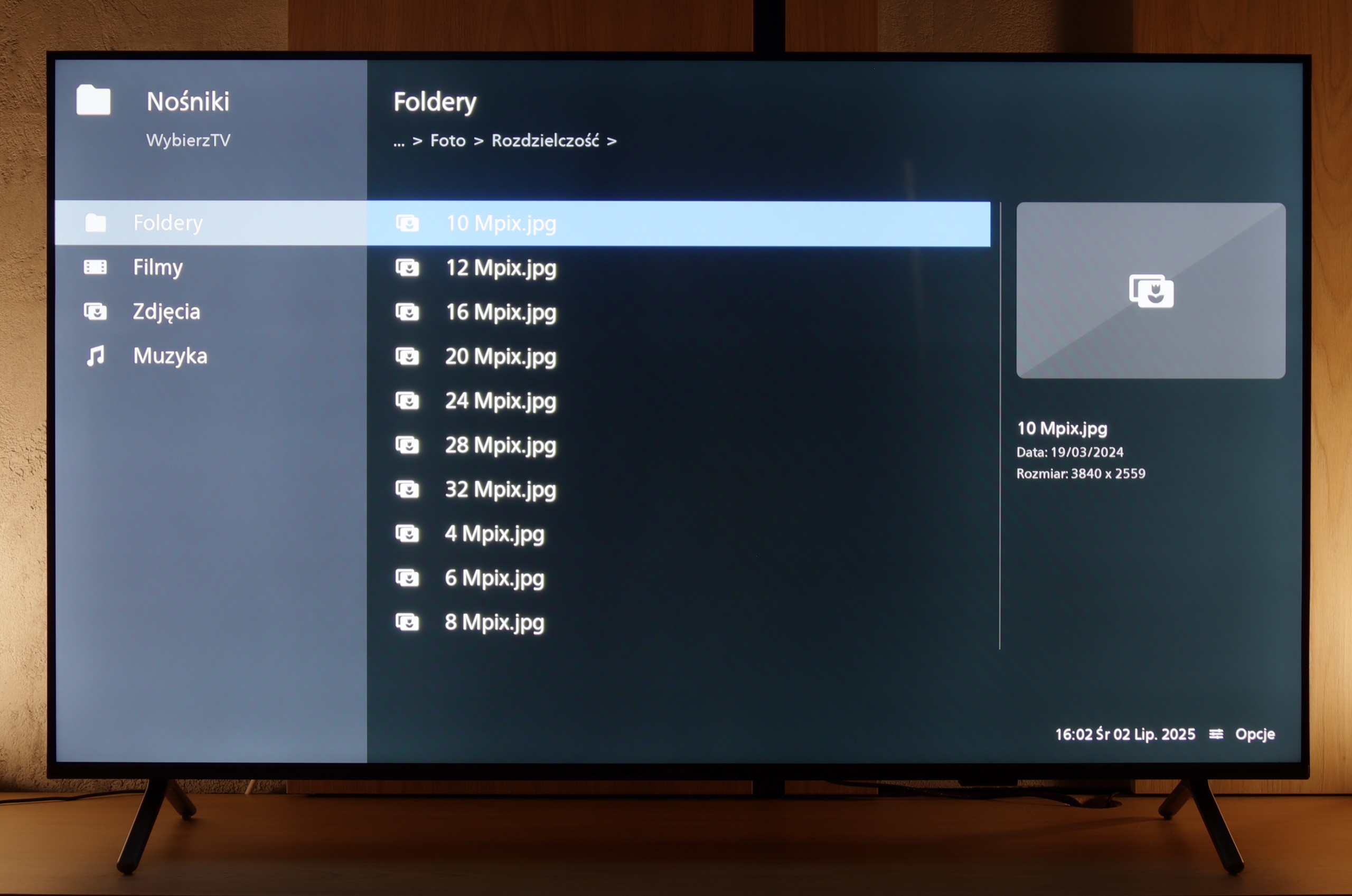
Thanks to the built-in player, the TCL C655 / C69B TV is capable of playing most file formats found on external storage devices, making it a versatile tool for consuming multimedia. However, there may be some limitations in supporting certain formats, which can be inconvenient for more demanding users. Fortunately, the Google TV system allows the installation of other media players from Google Play, which helps eliminate compatibility issues. This gives users the ability to choose applications that best meet their needs, significantly increasing the functionality of the TV.
PUS8560 handles playback of most popular video and audio formats from USB memory without any major issues, so there's no point in detailing the compatibilities individually. In daily use, it should just work – and it does. The only thing worth noting is the way it handles photos. Although the television easily recognizes common file extensions, with very high resolution graphic files, some photos may simply not display. This is not a huge problem, but it's good to keep it in mind, especially if we want to view photographs directly from the camera. Aside from that, PUS8560 shouldn't have any major problems with playback of files from USB.
Apps
10/10
4.6/10














































Sound
6.6/10
6.2/10
- Subjective sound quality:6.6/106.2/10
- Dolby Digital Plus 7.1:
- Dolby True HD 7.1:
- Dolby Atmos in Dolby Digital Plus (JOC):
- Dolby Atmos in Dolby True HD:
- DTS:X in DTS-HD MA:
- DTS-HD Master Audio:
The sound in TCL C655 / C69B is surprisingly good, especially for this class of device. The 2x10W speakers combined with a 15W Onkyo subwoofer (for sizes 55"+) offer surprisingly good sound quality, including noticeable bass. The sound remains clear across the volume range, although the high tones could be a bit clearer. The support for DTS audio format is also a plus.
The TV sounds quite pleasant and it can confidently be stated that the sound level will be fully sufficient for most users – both for watching everyday programs and for an evening session with a series. Moreover, a nice surprise is that even in such an affordable series, Philips has decided to acquire licenses for full audio formats such as Dolby Atmos and DTS. This is great news for home theater and soundbar owners, as it means full compatibility and no need to "fiddle around" with connecting external devices.


